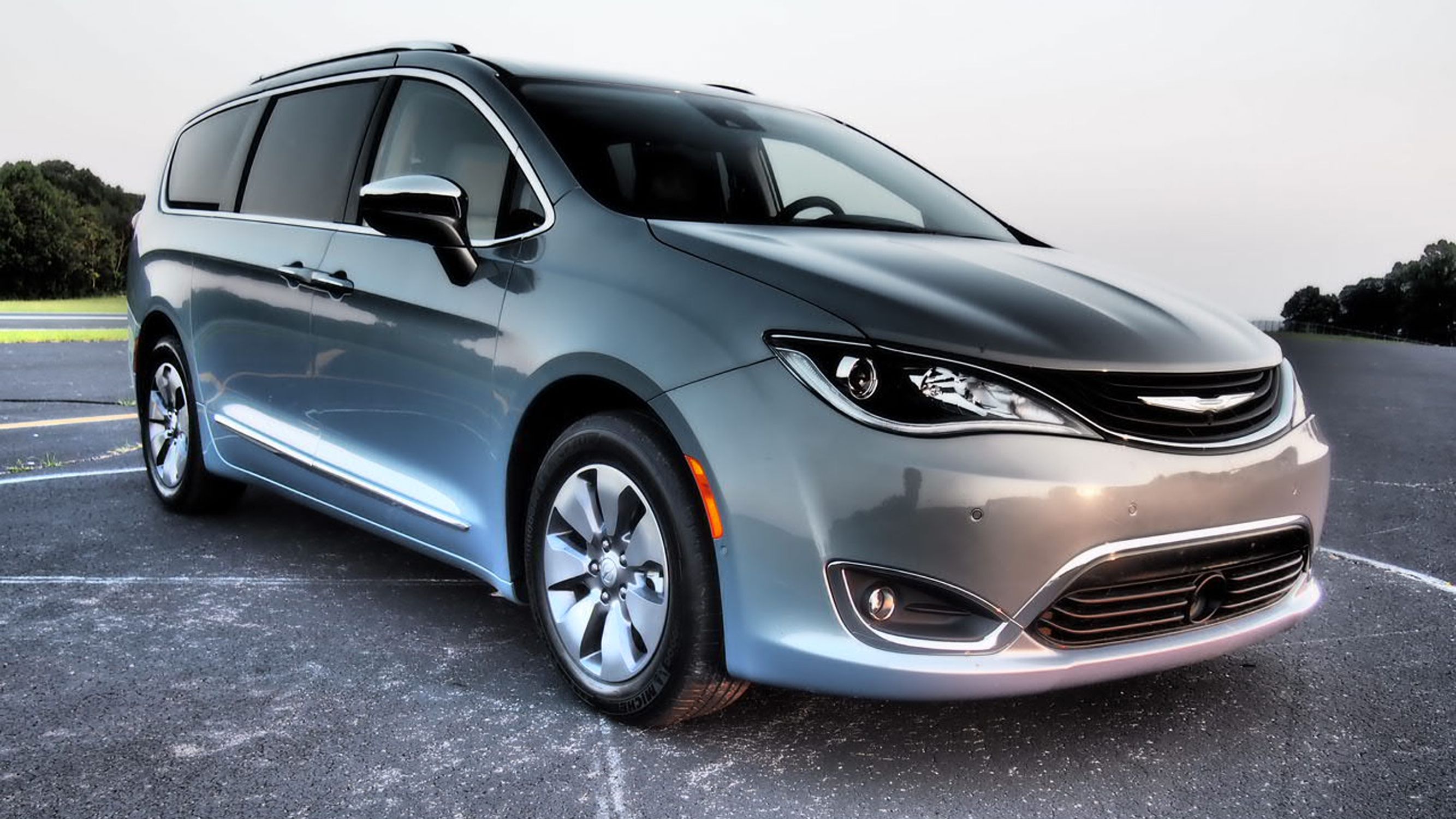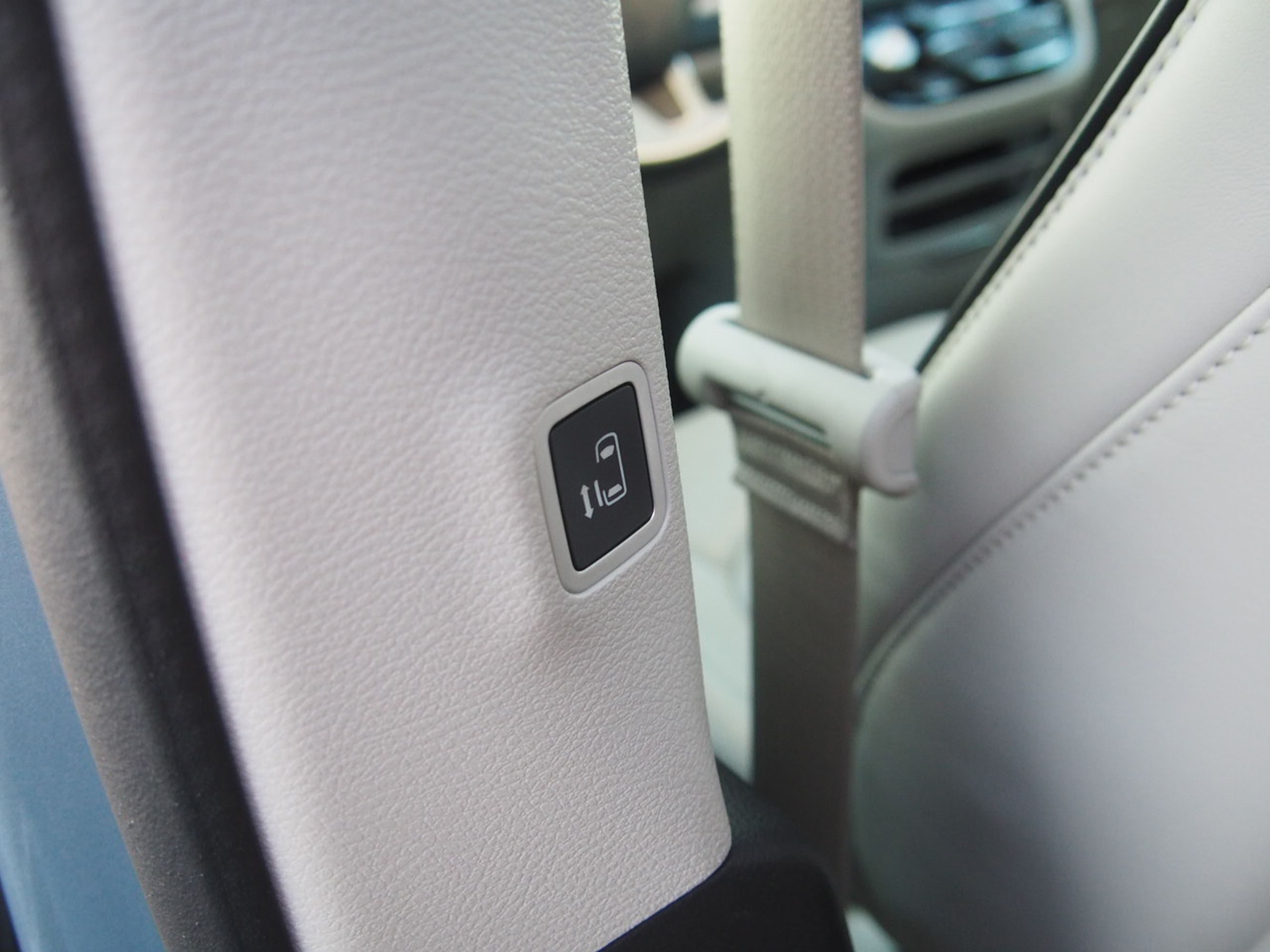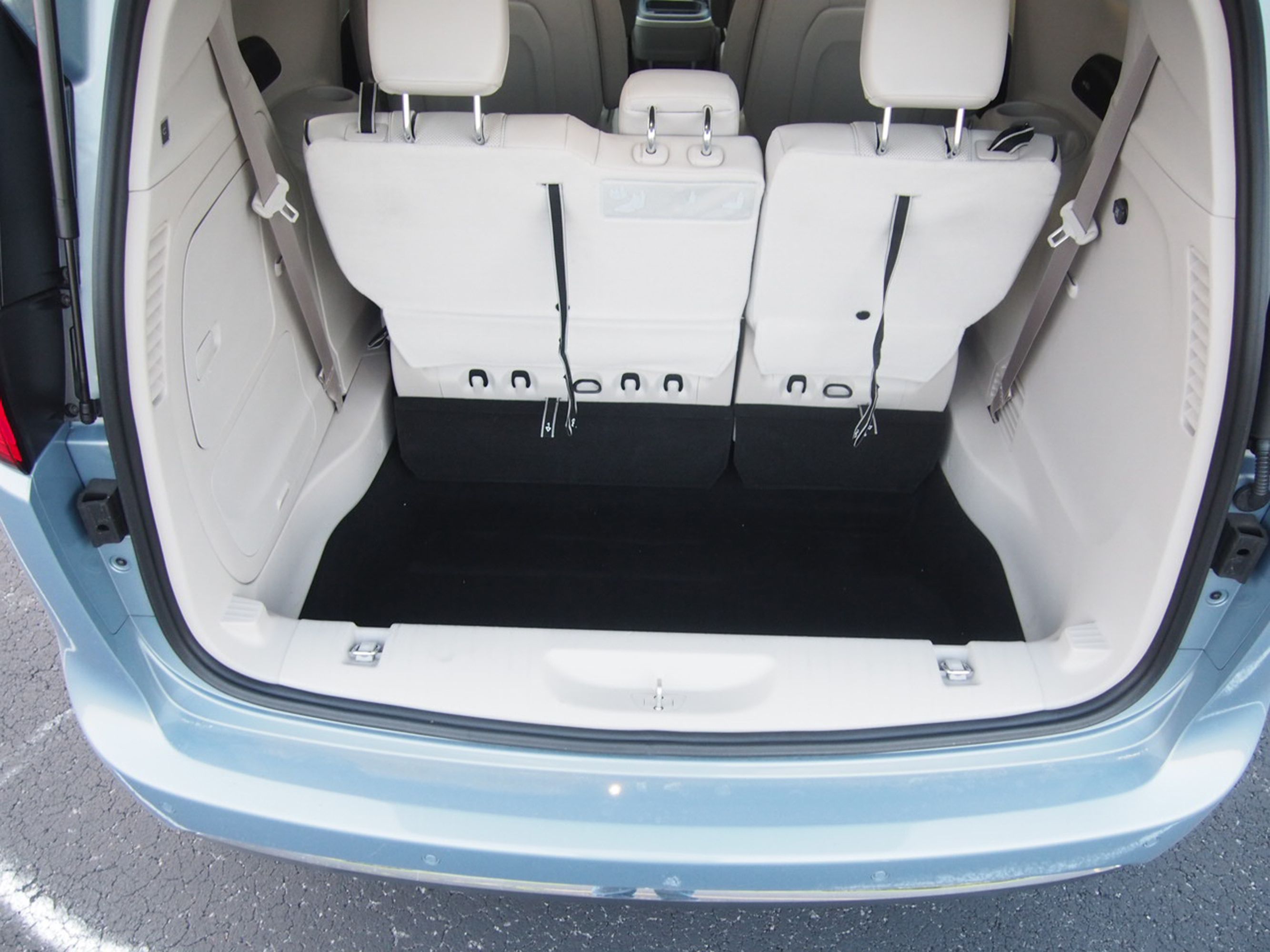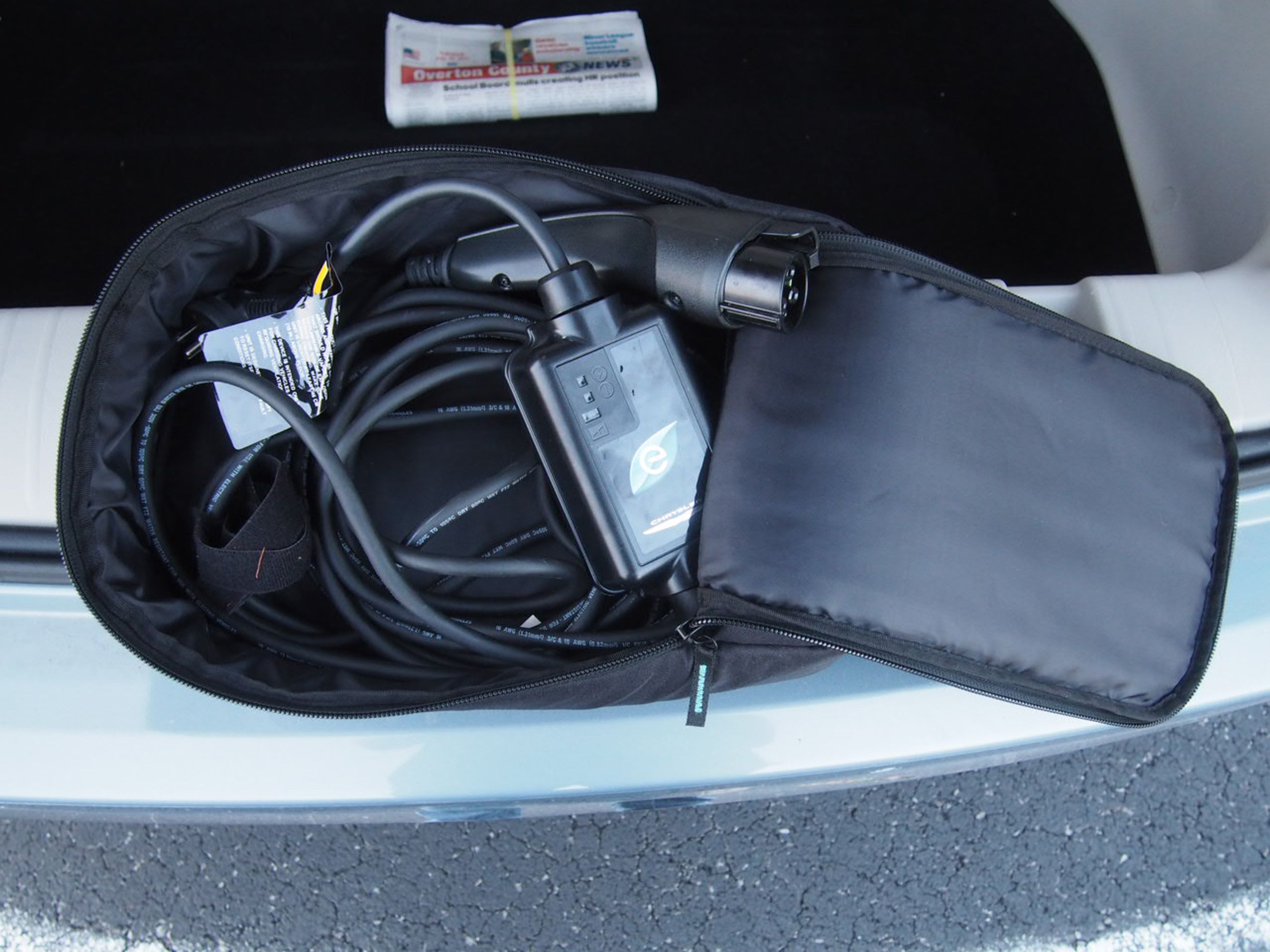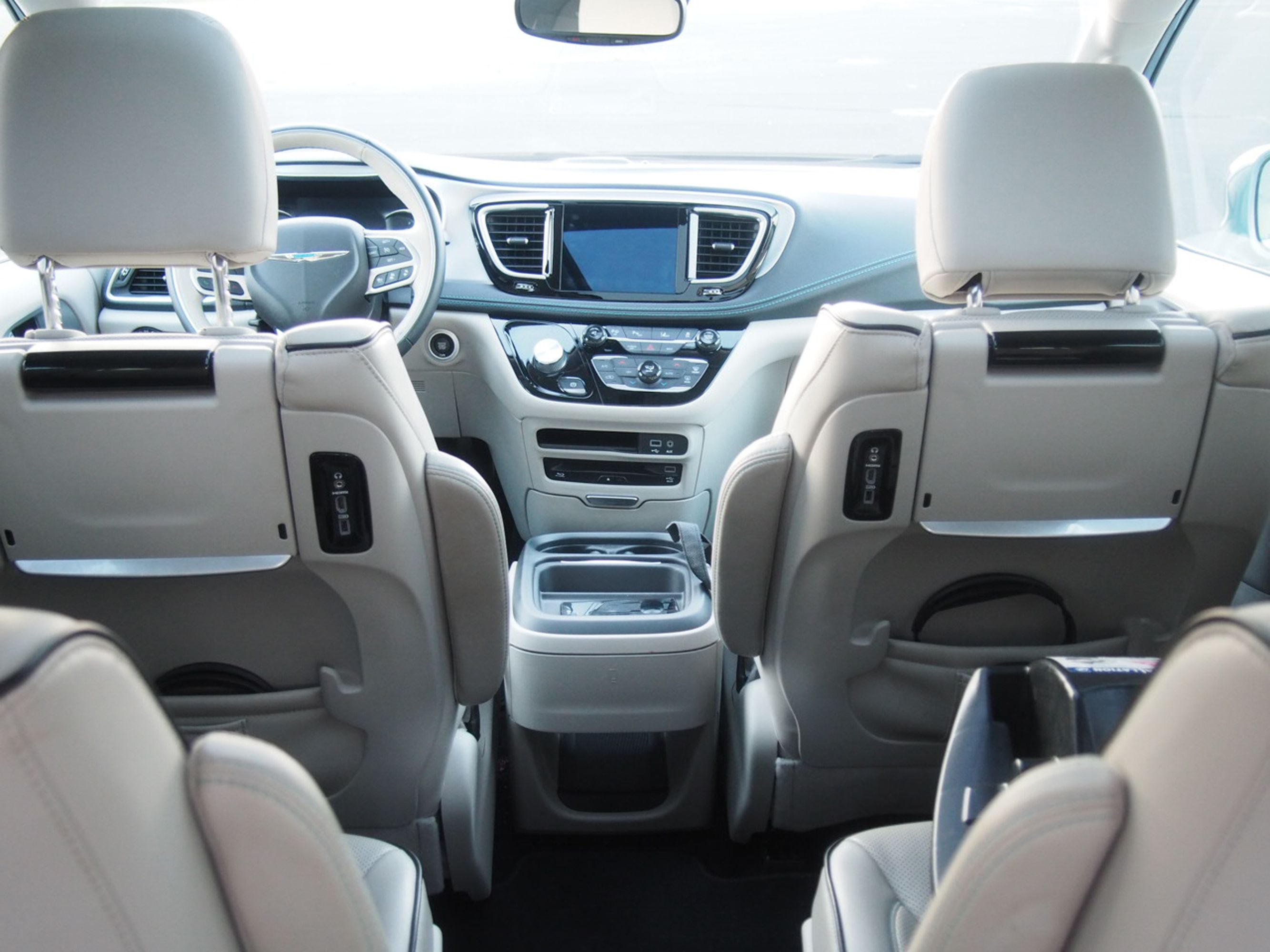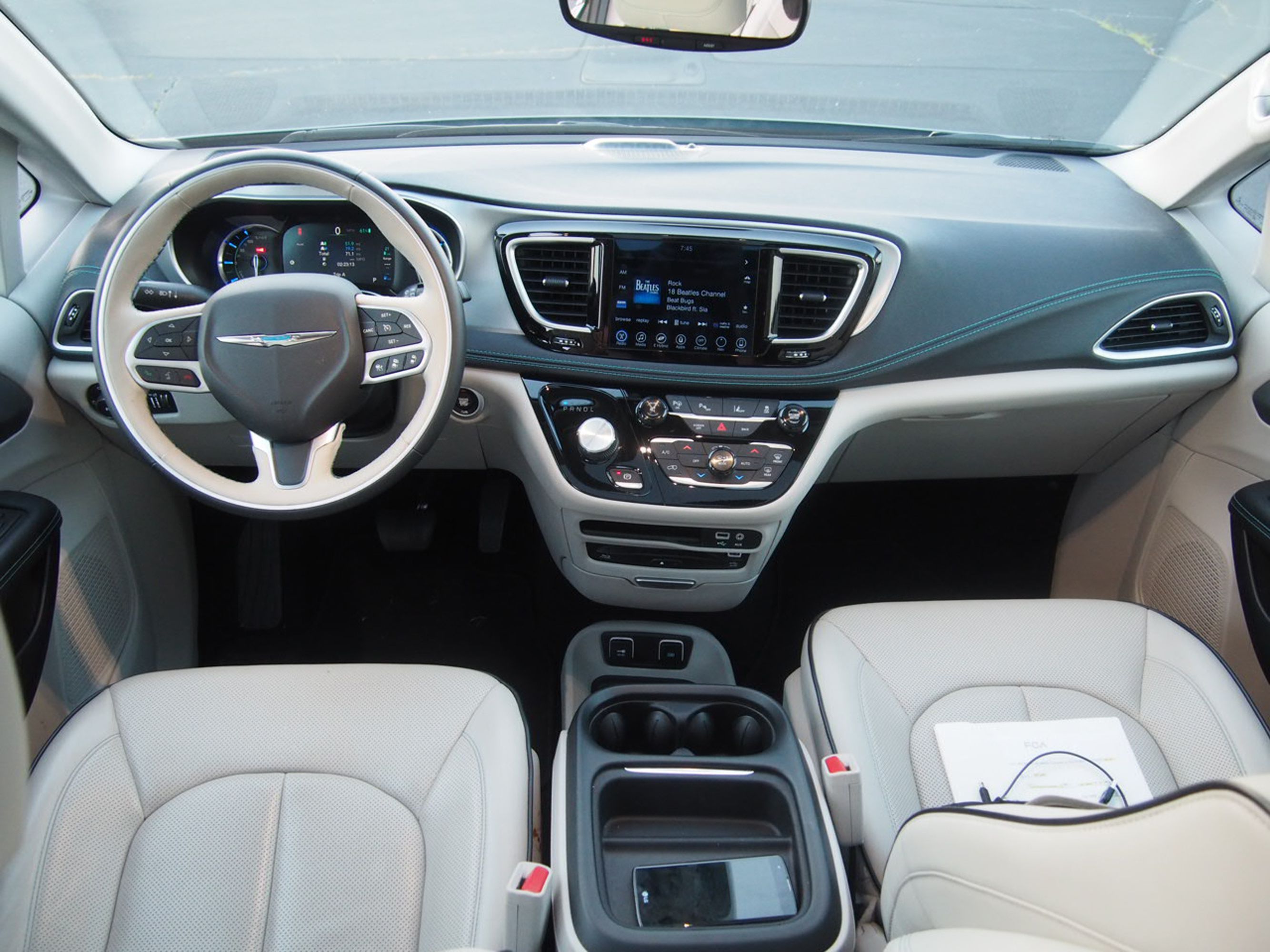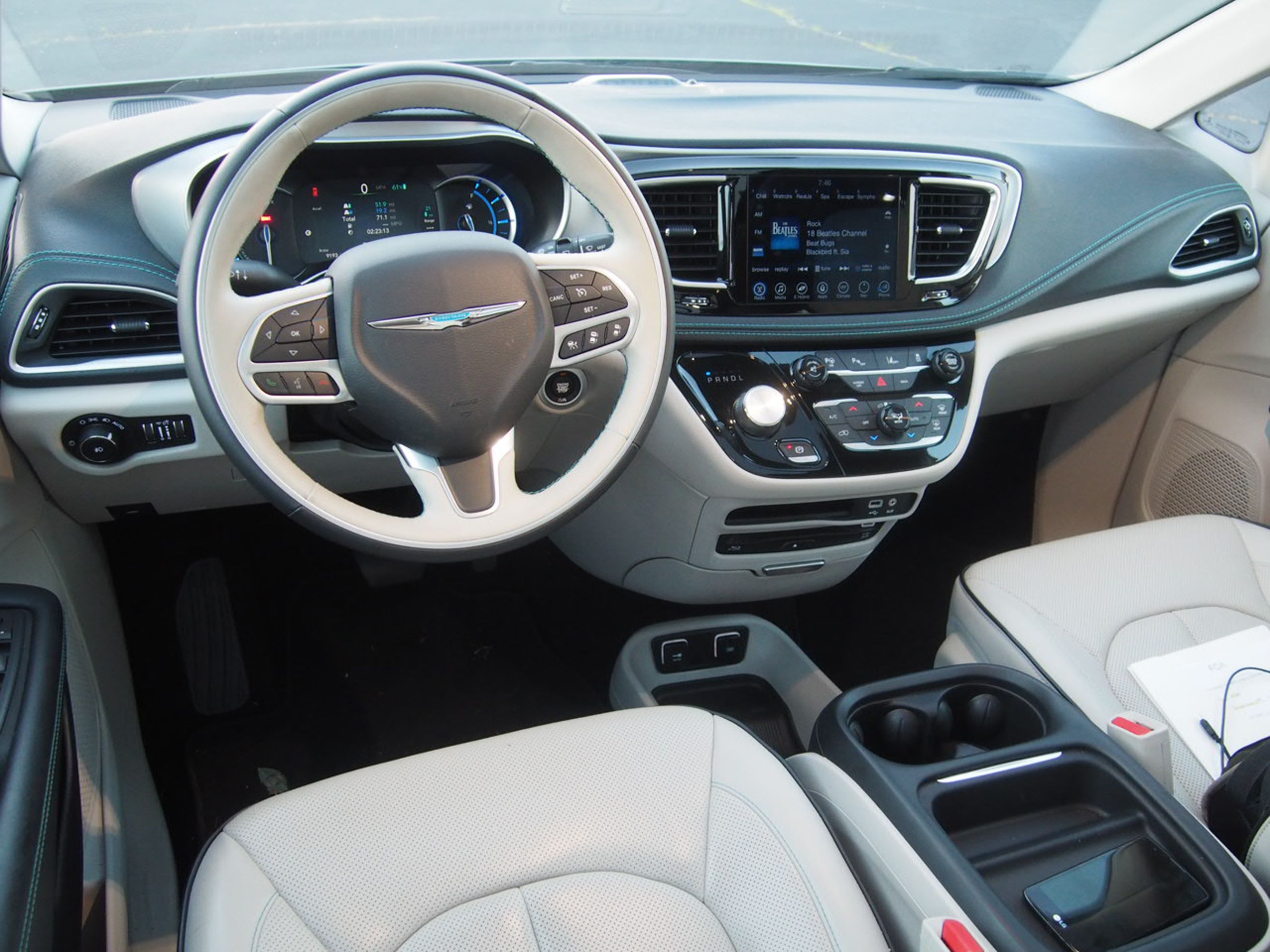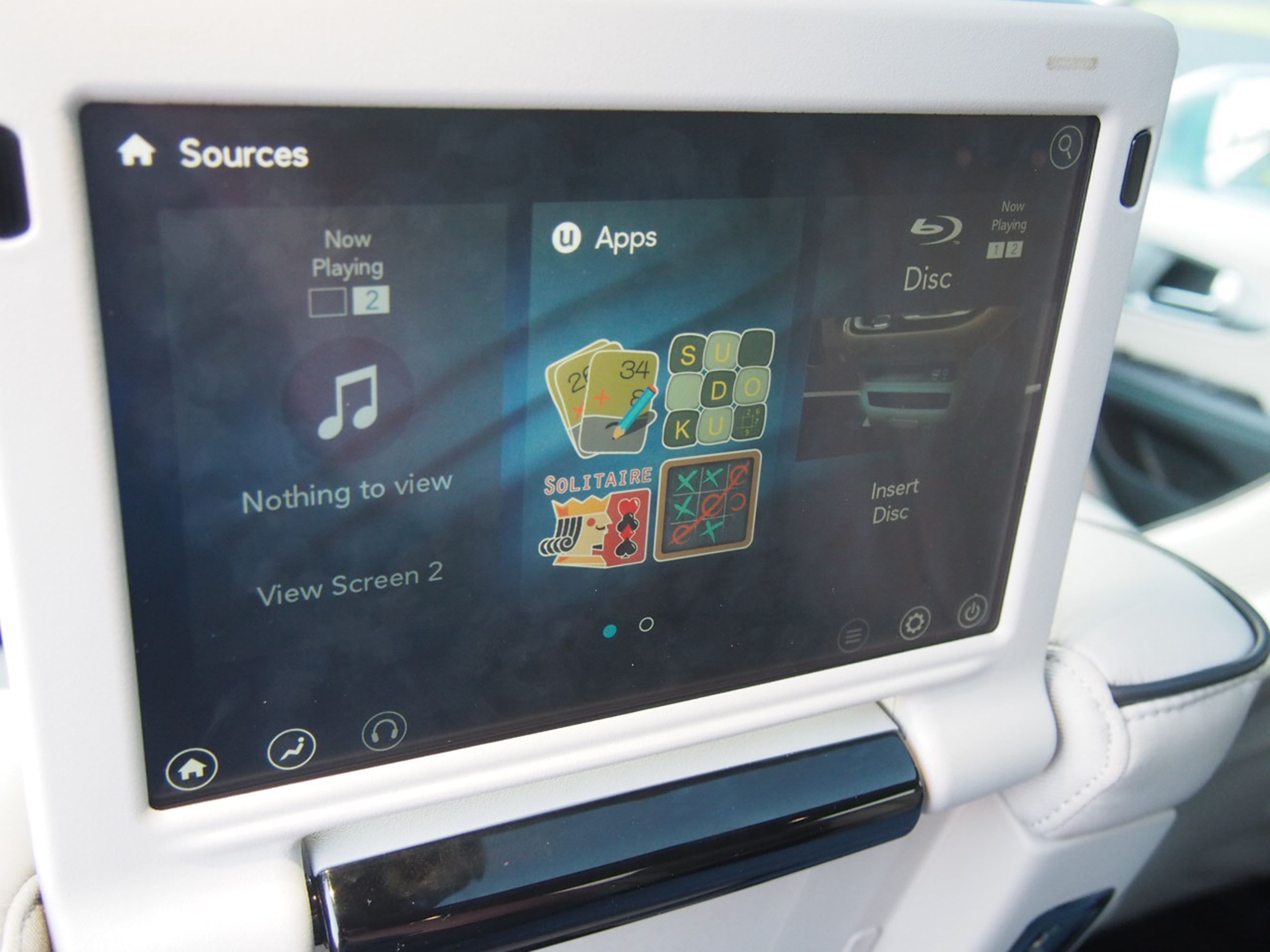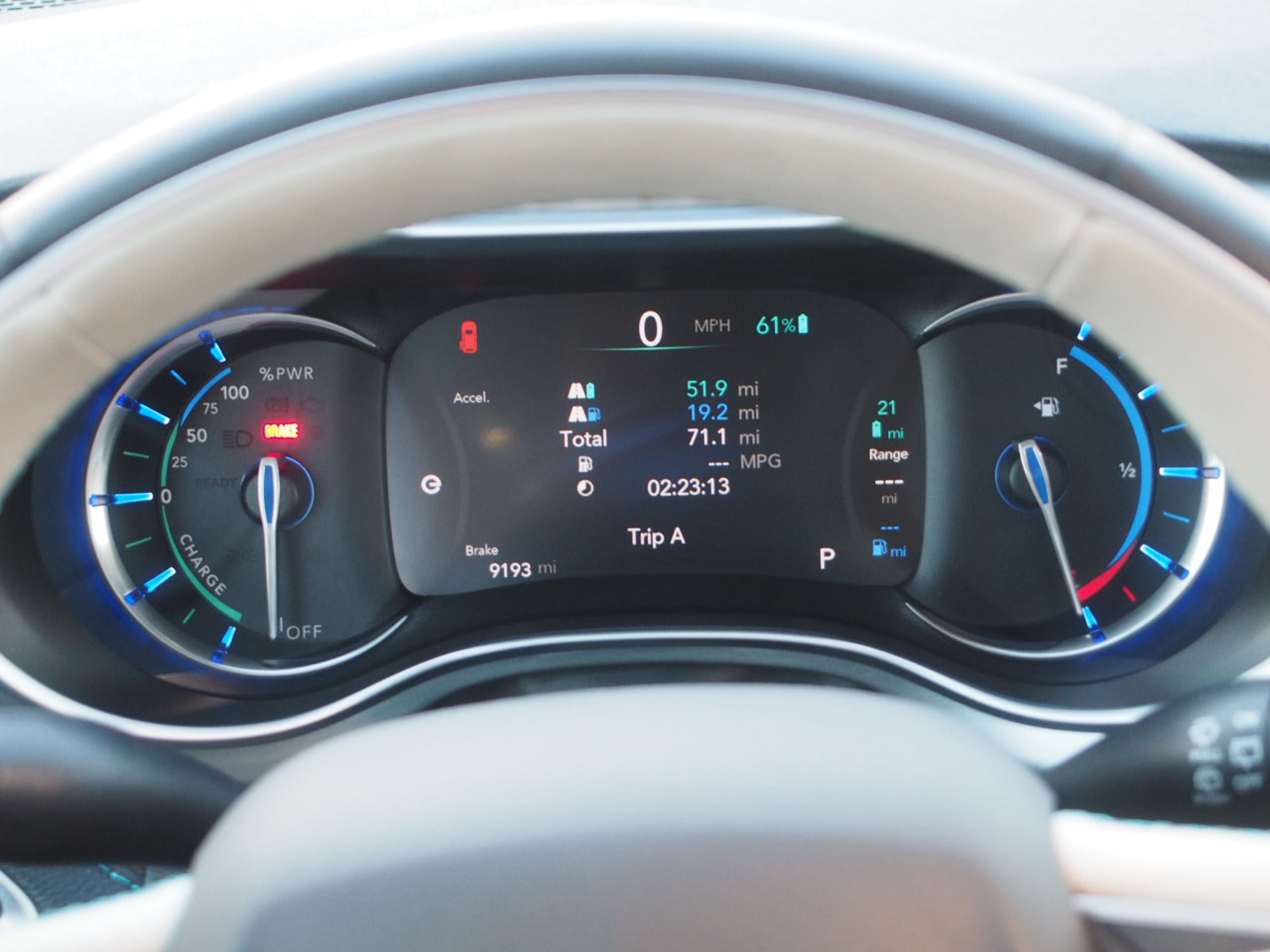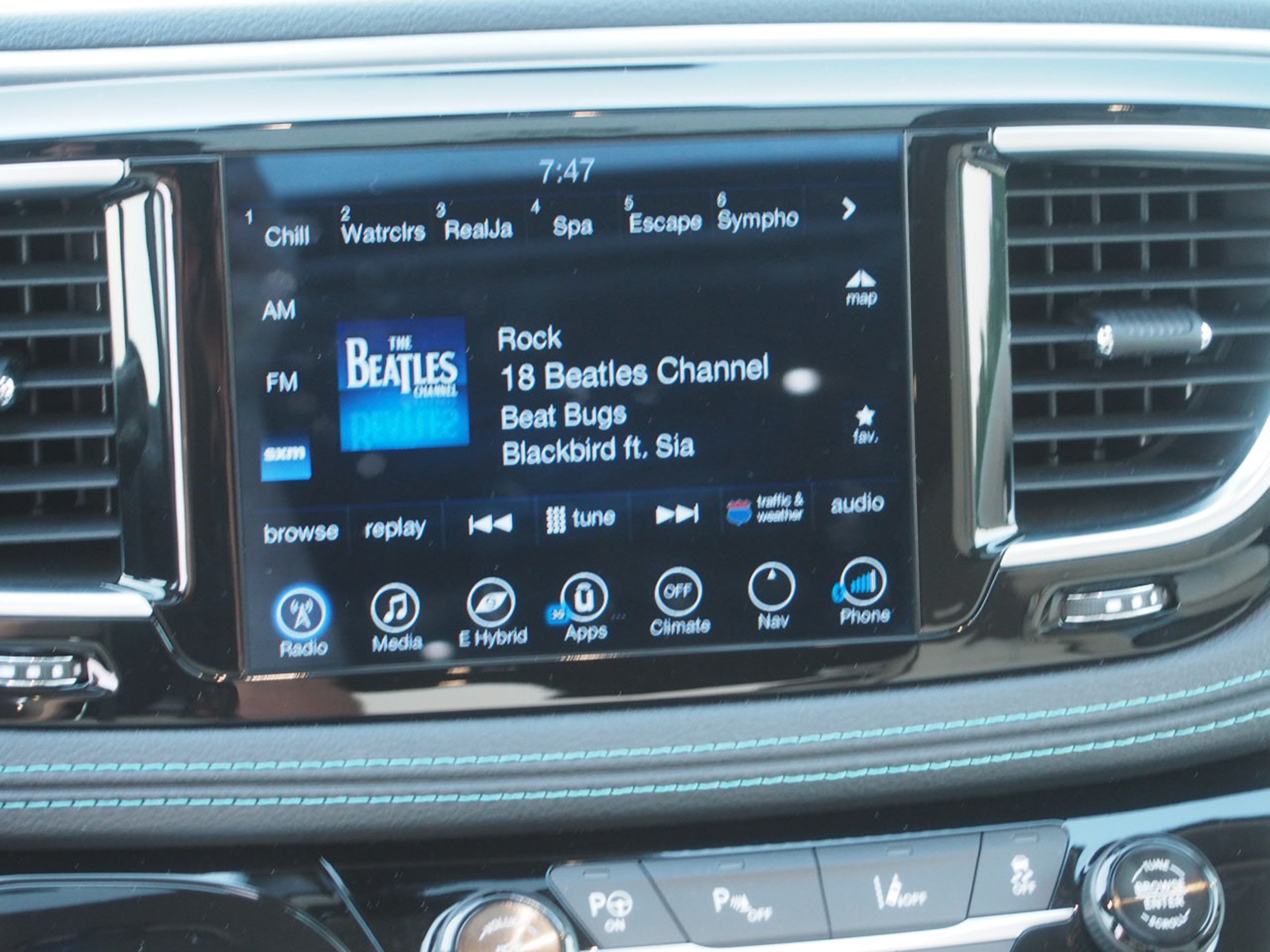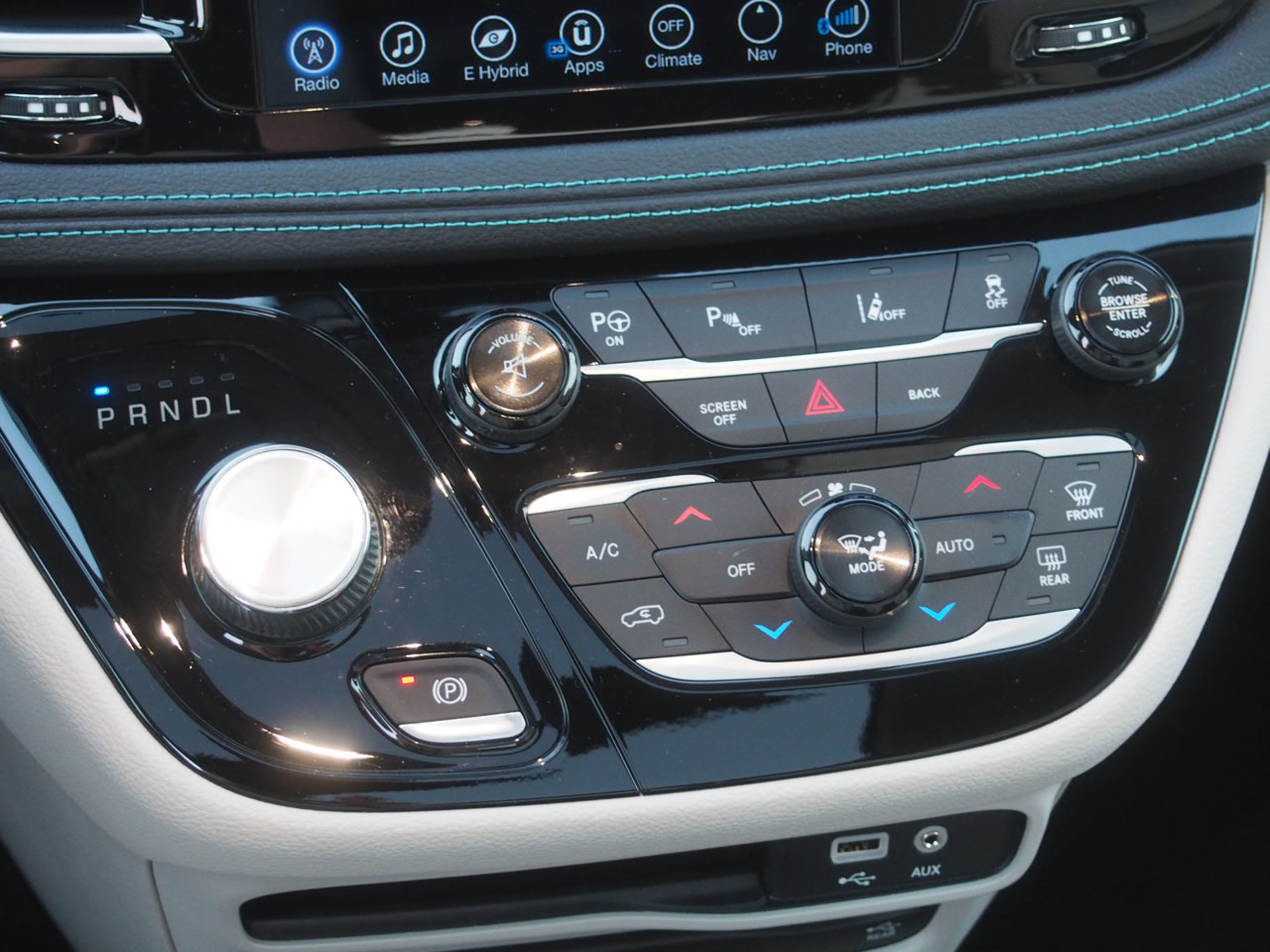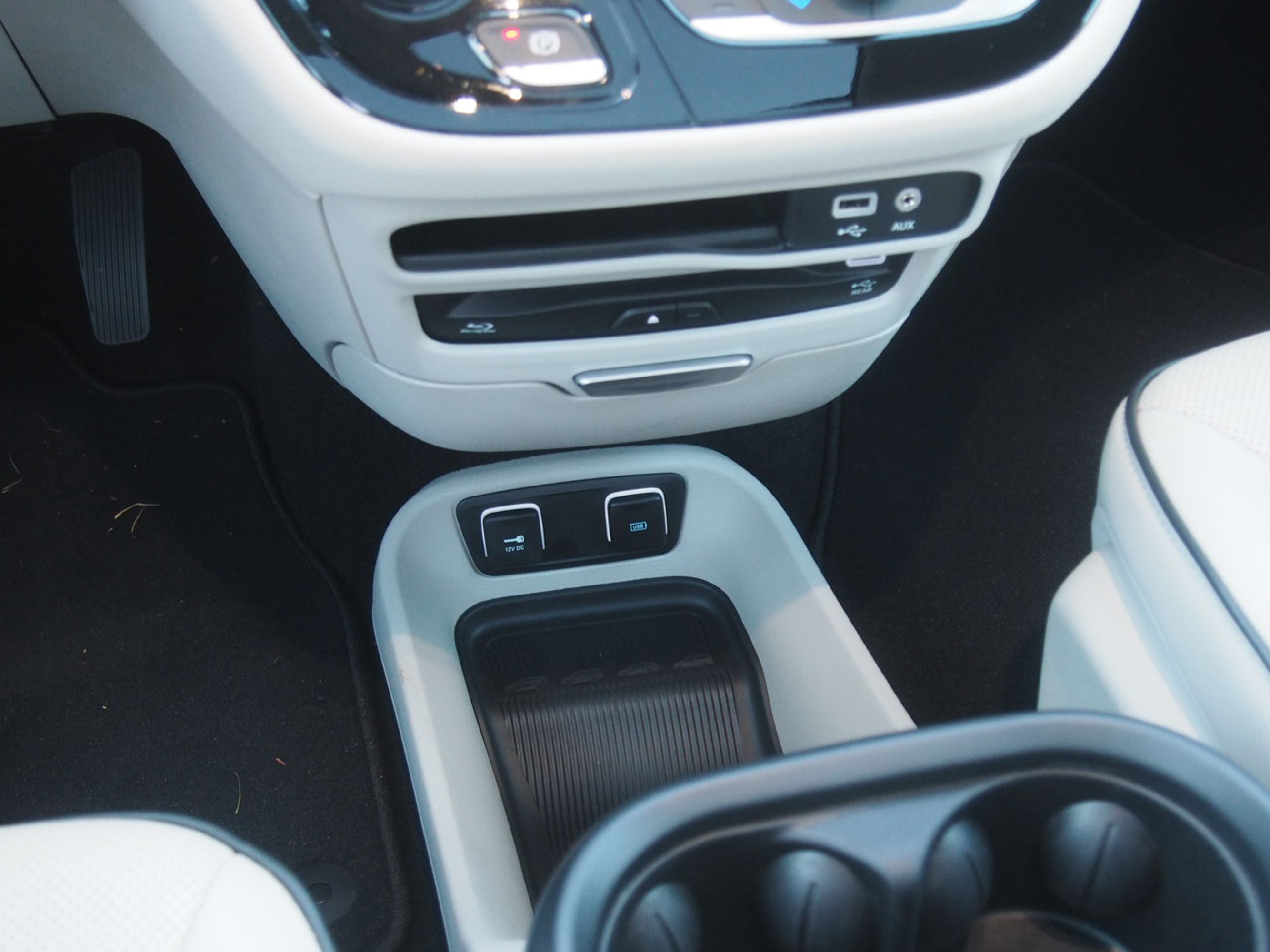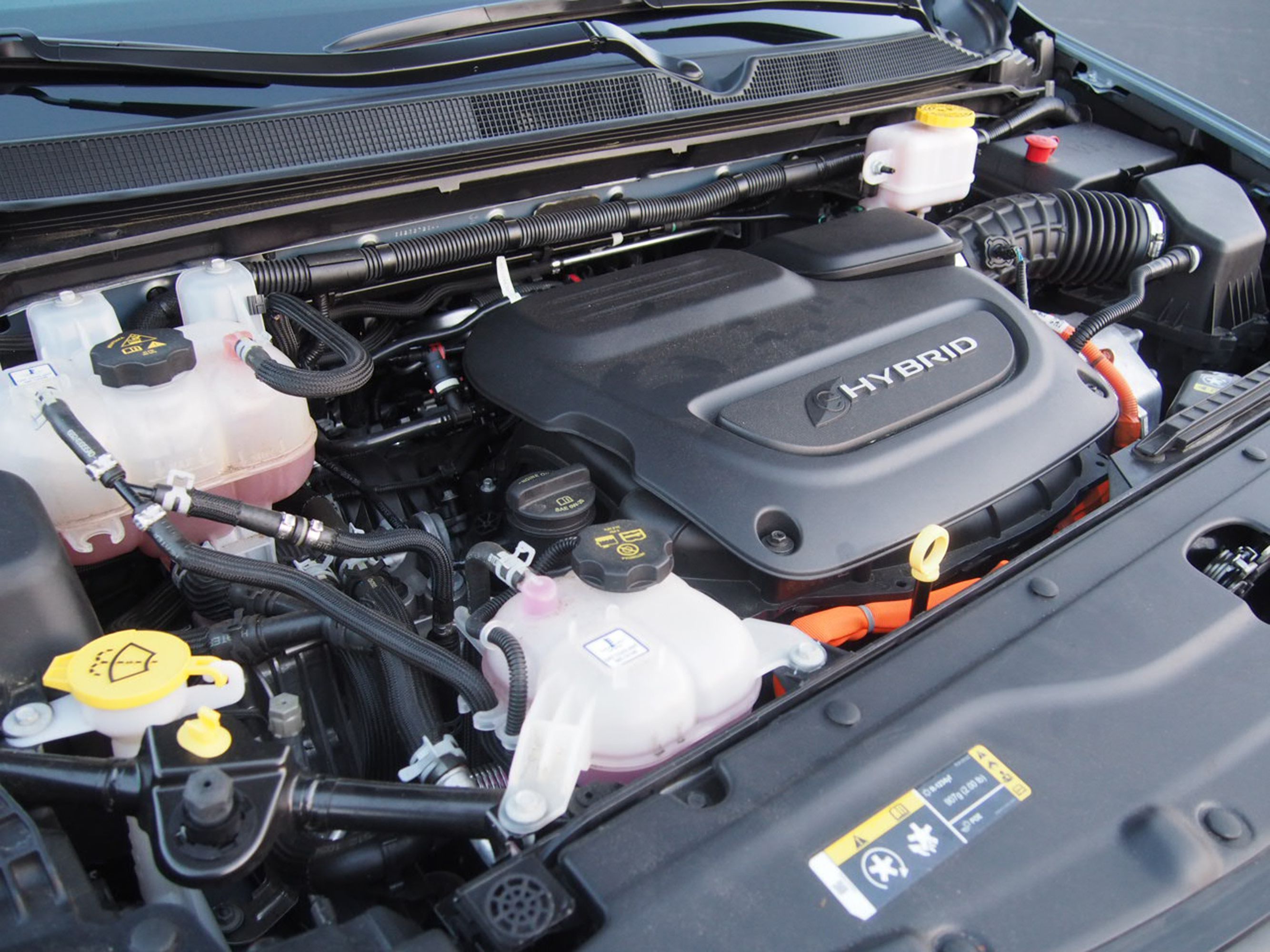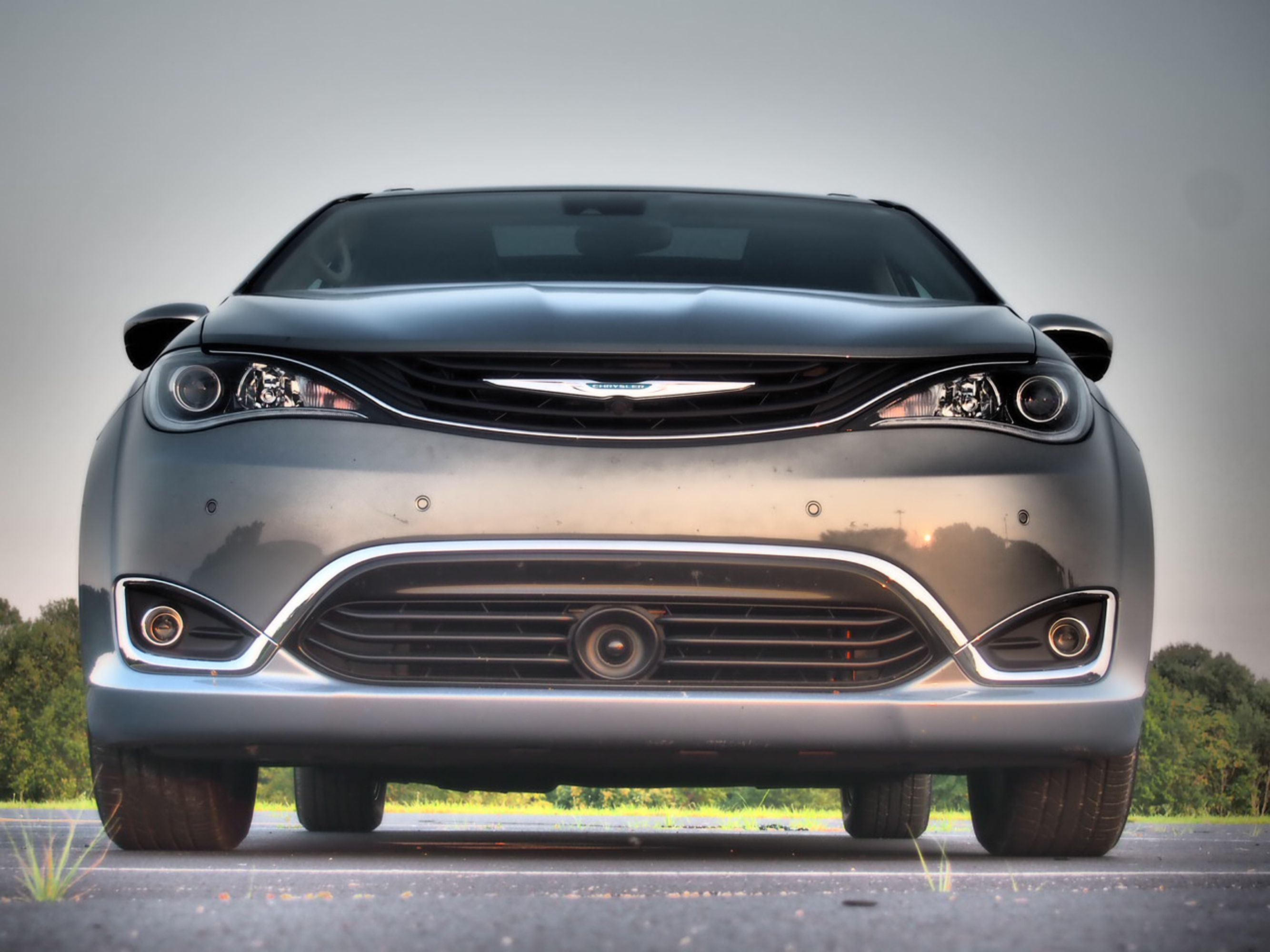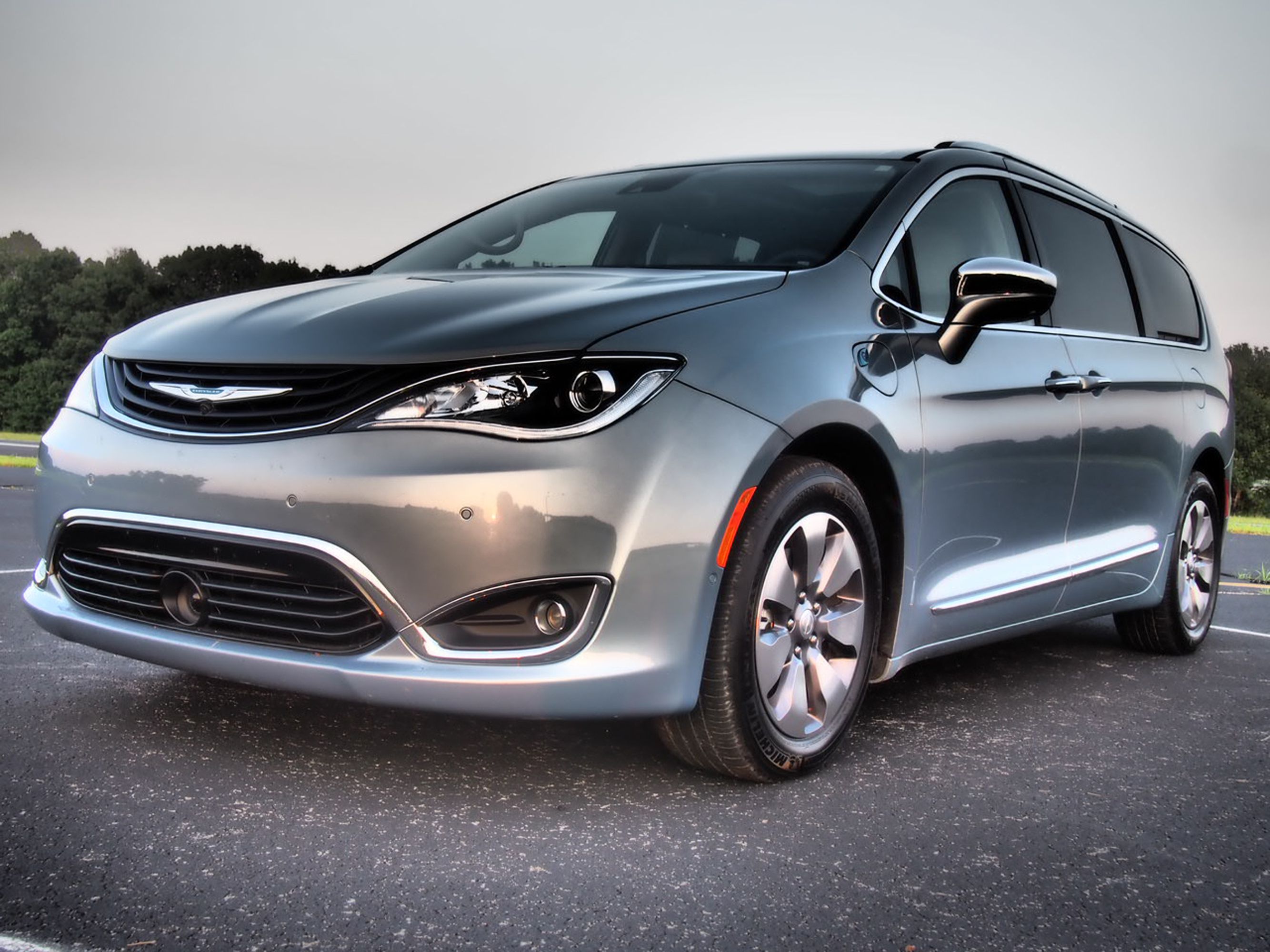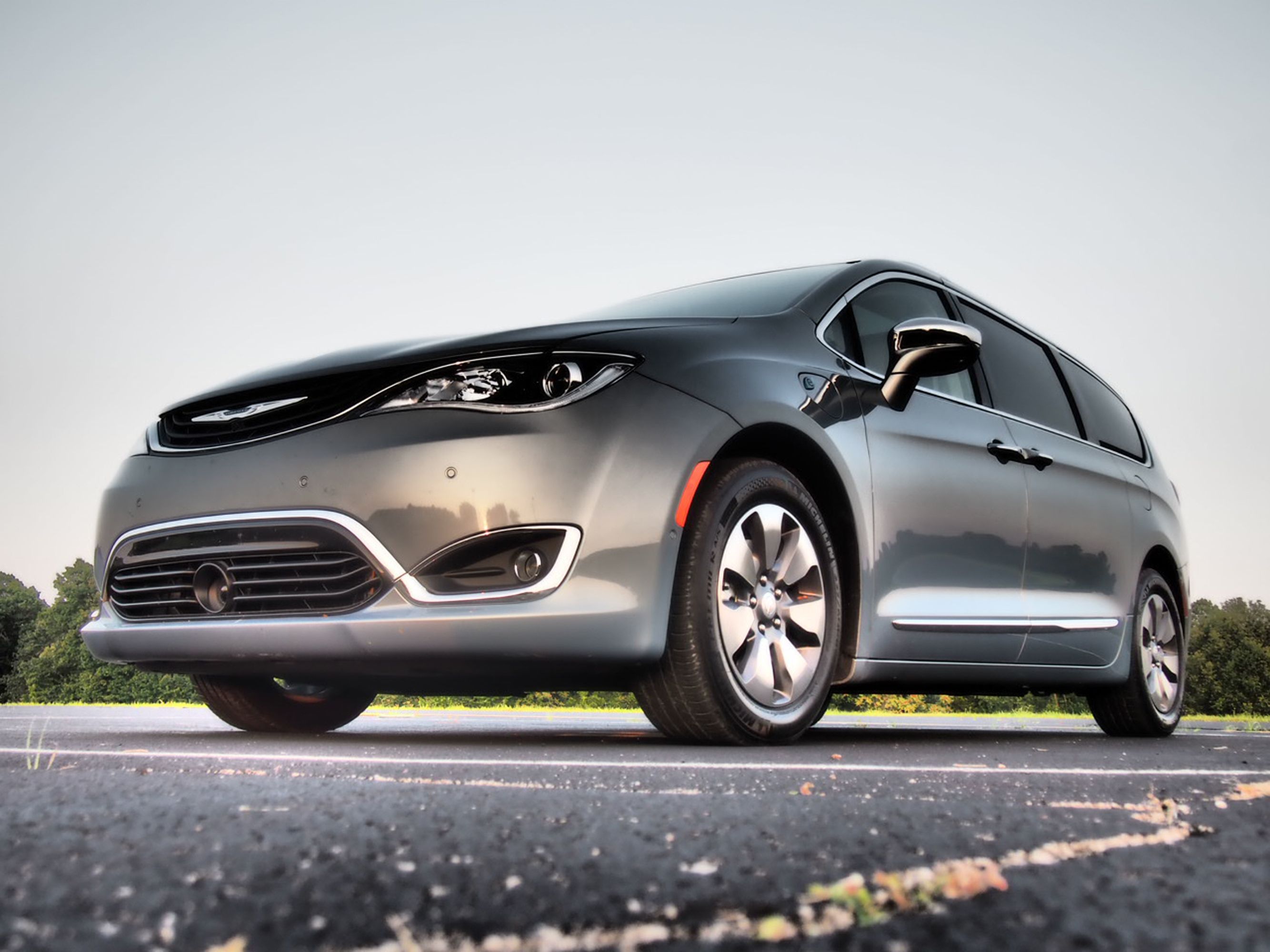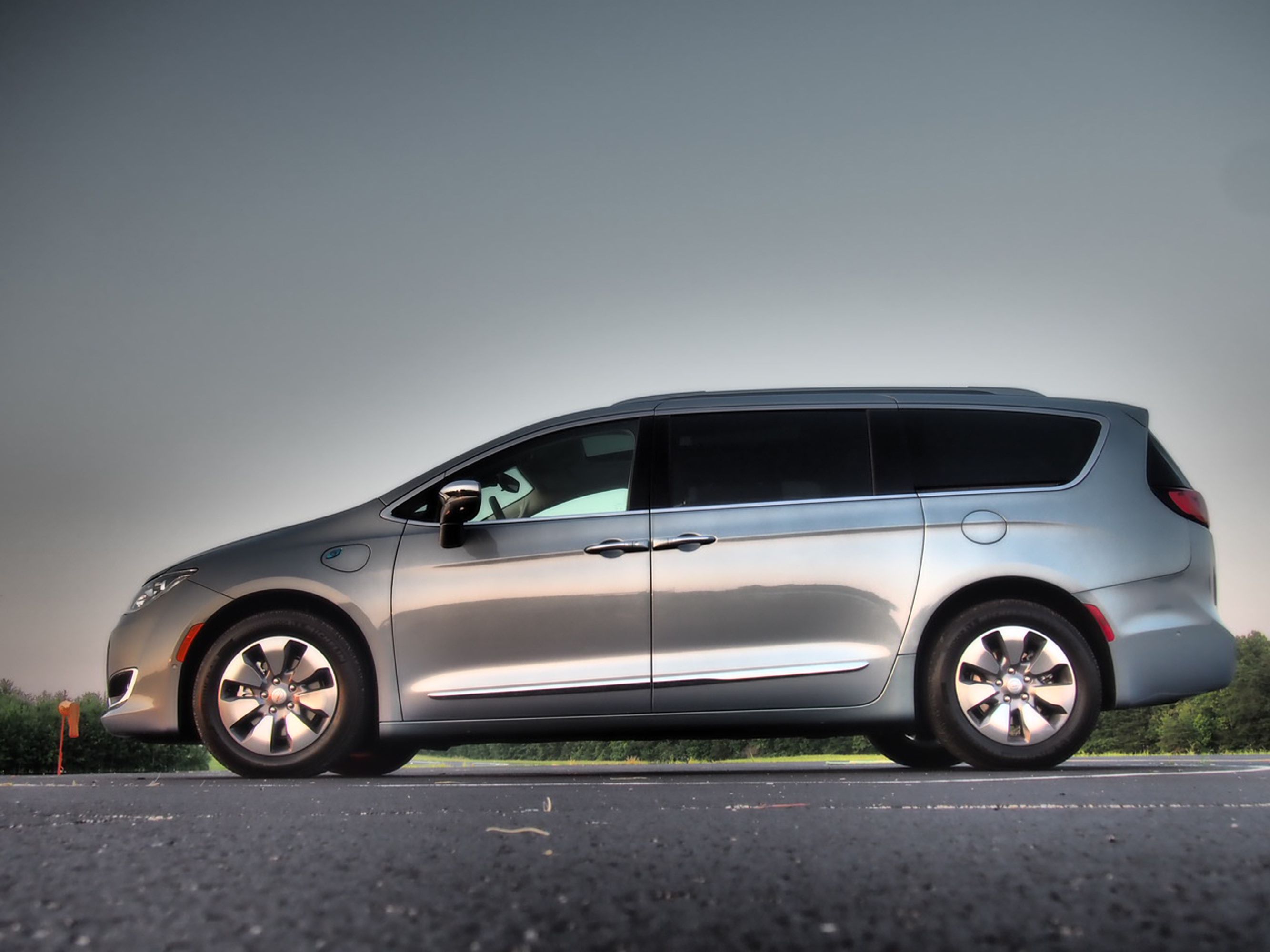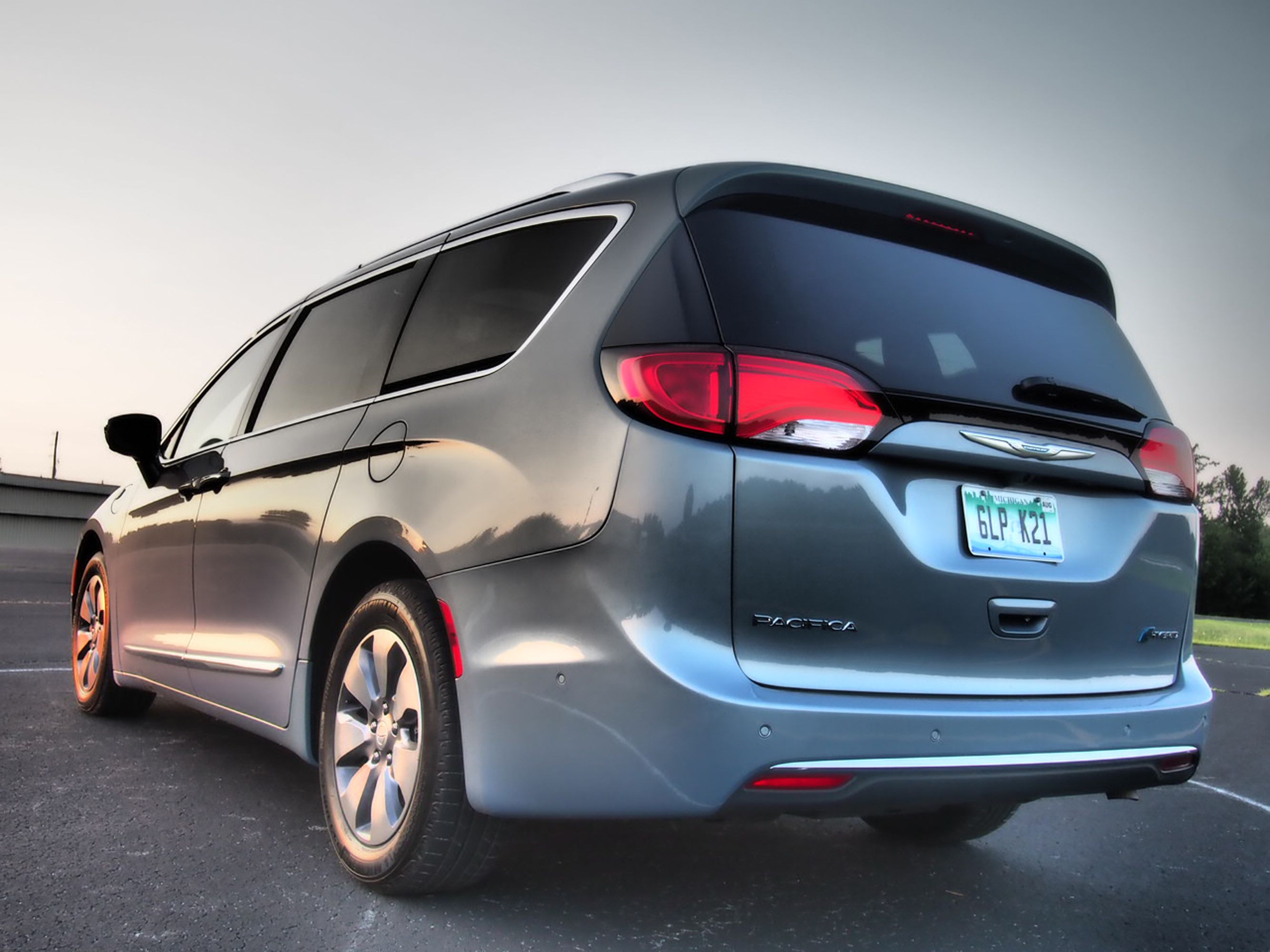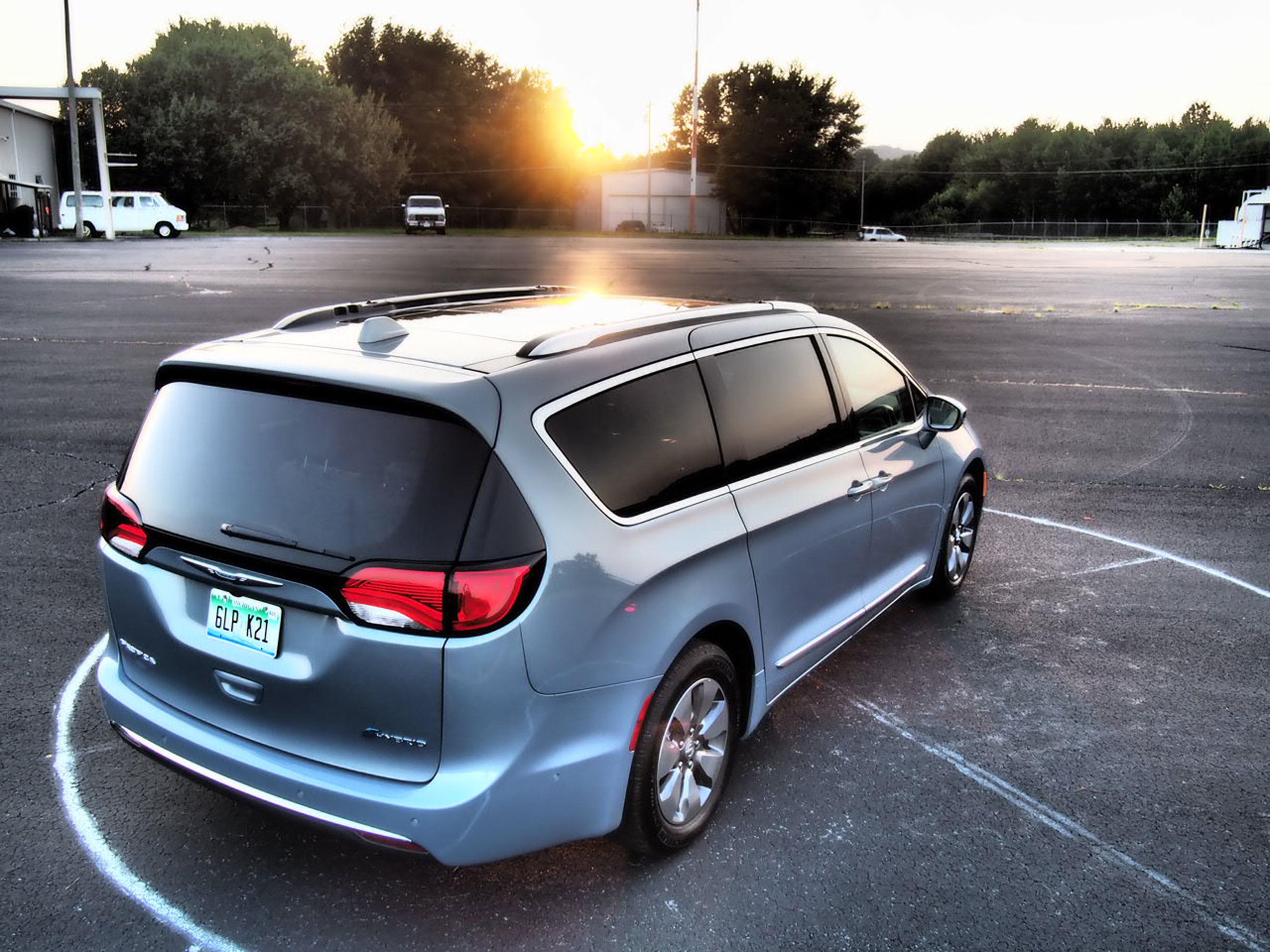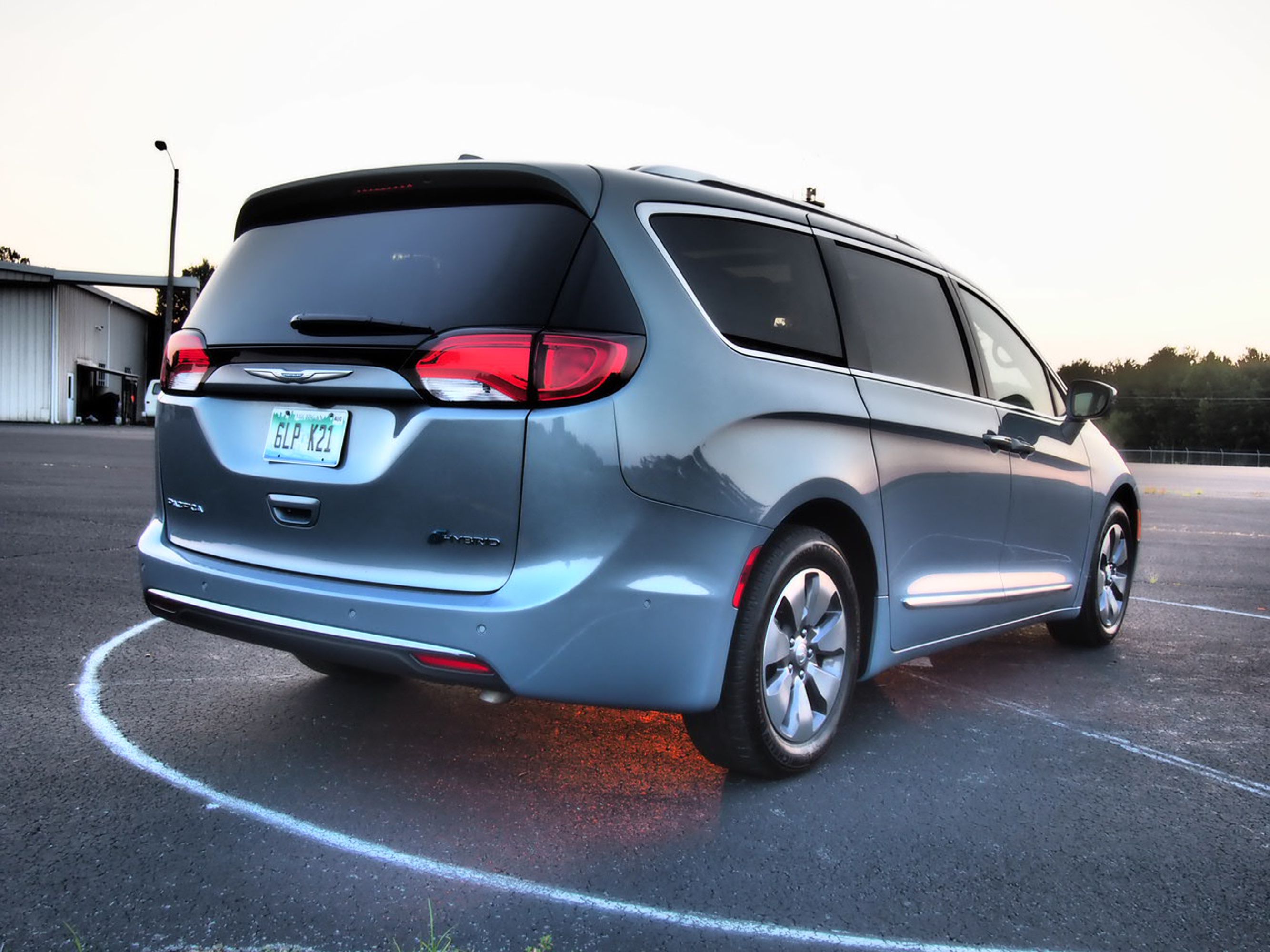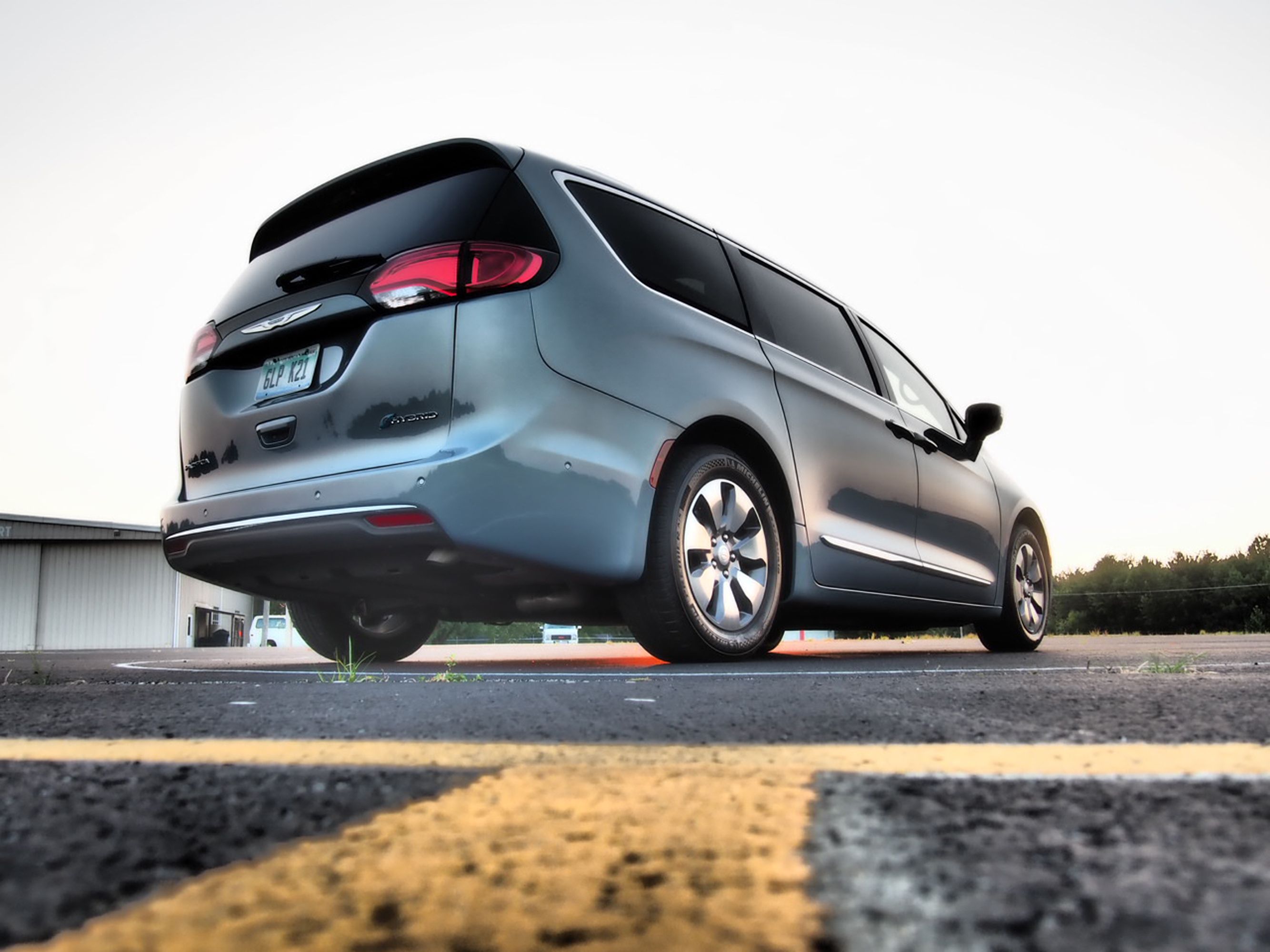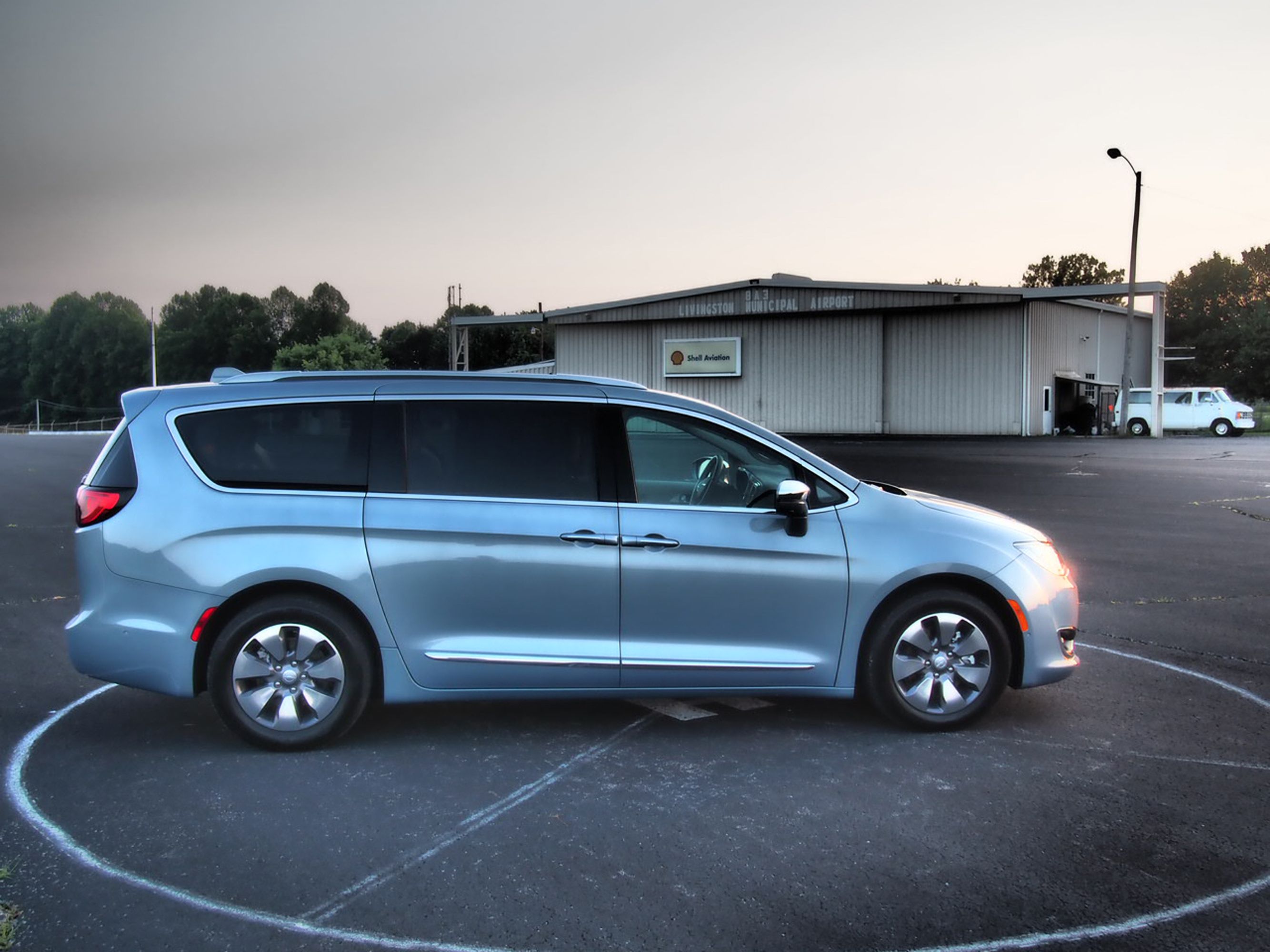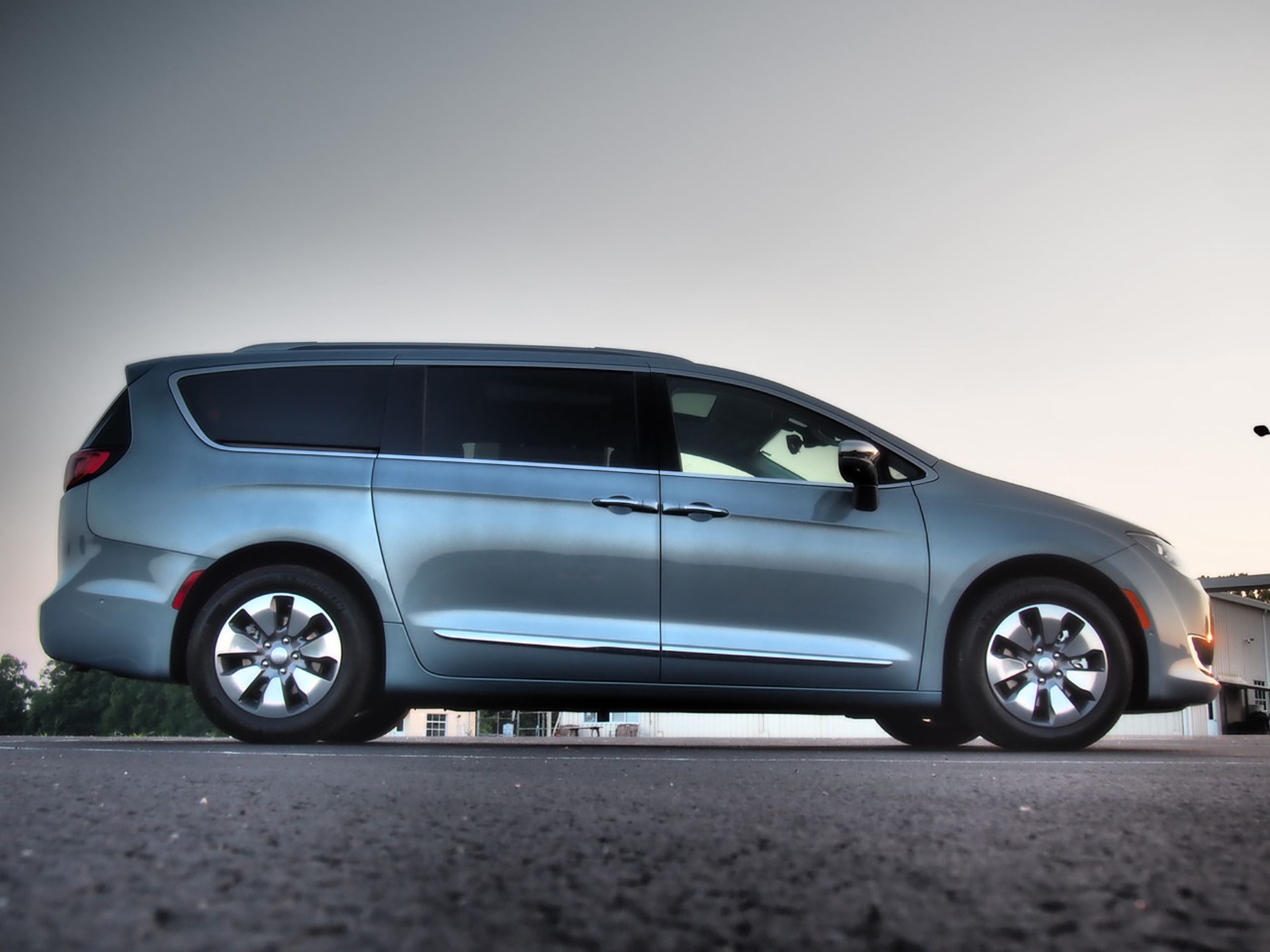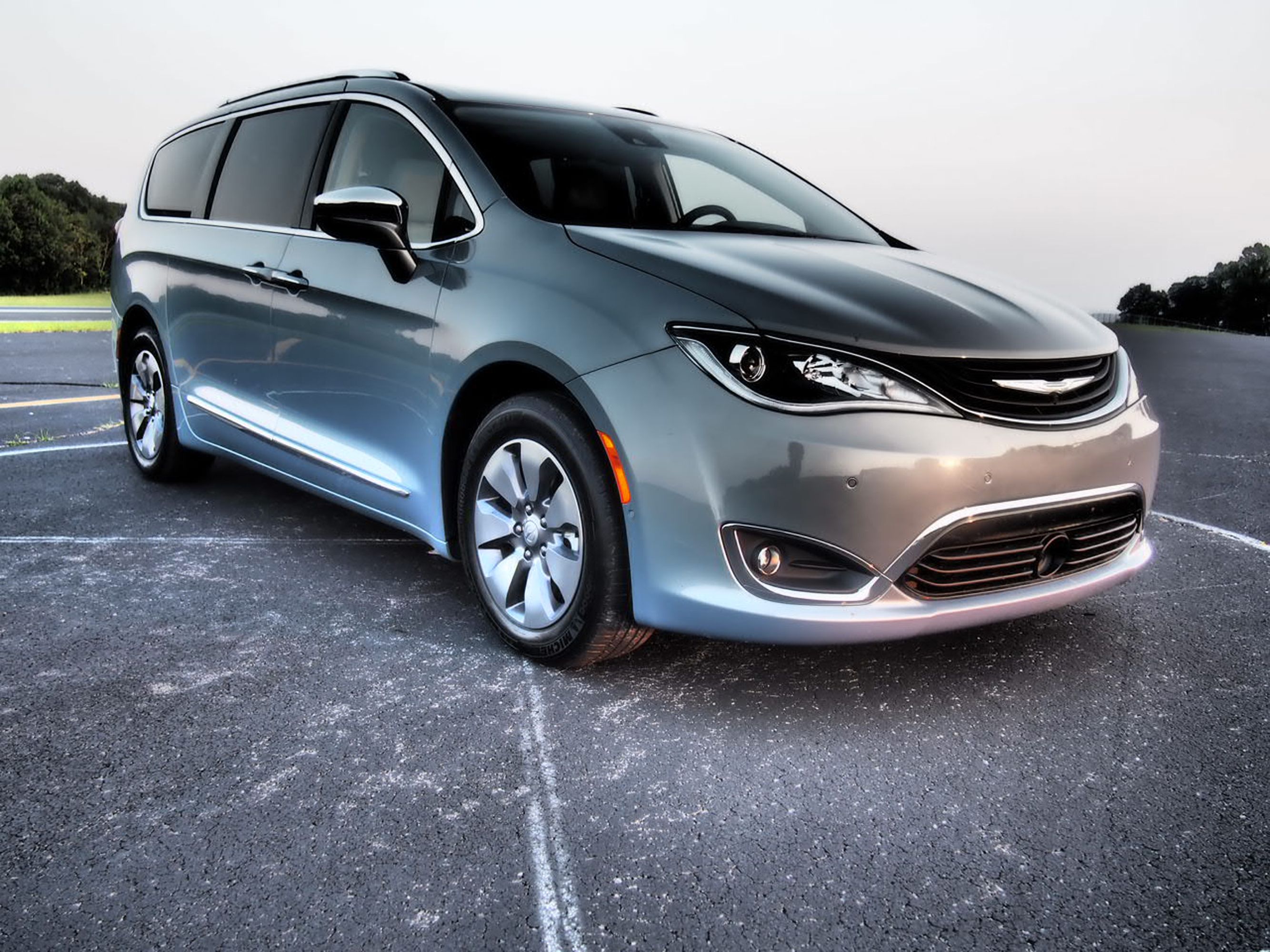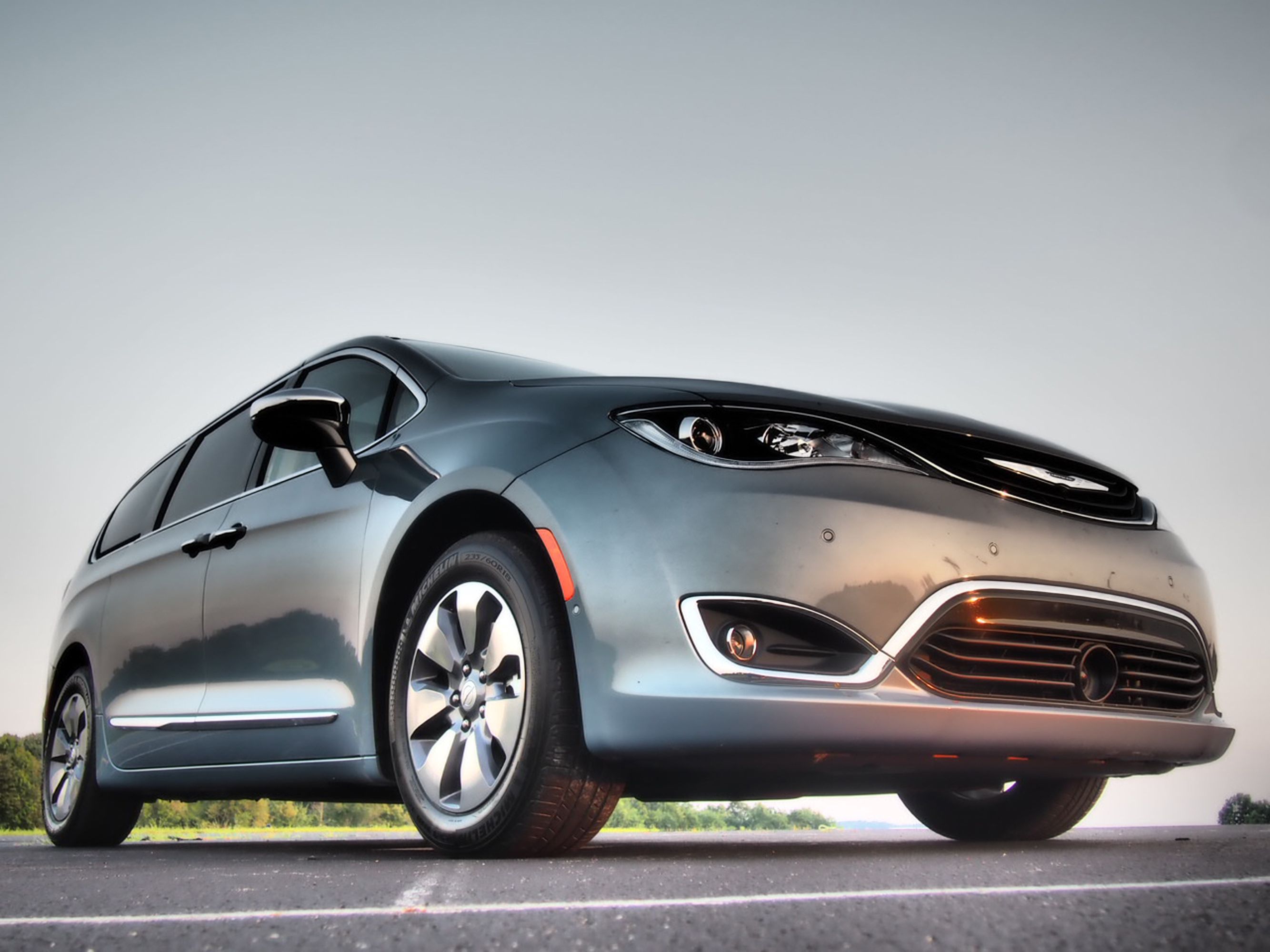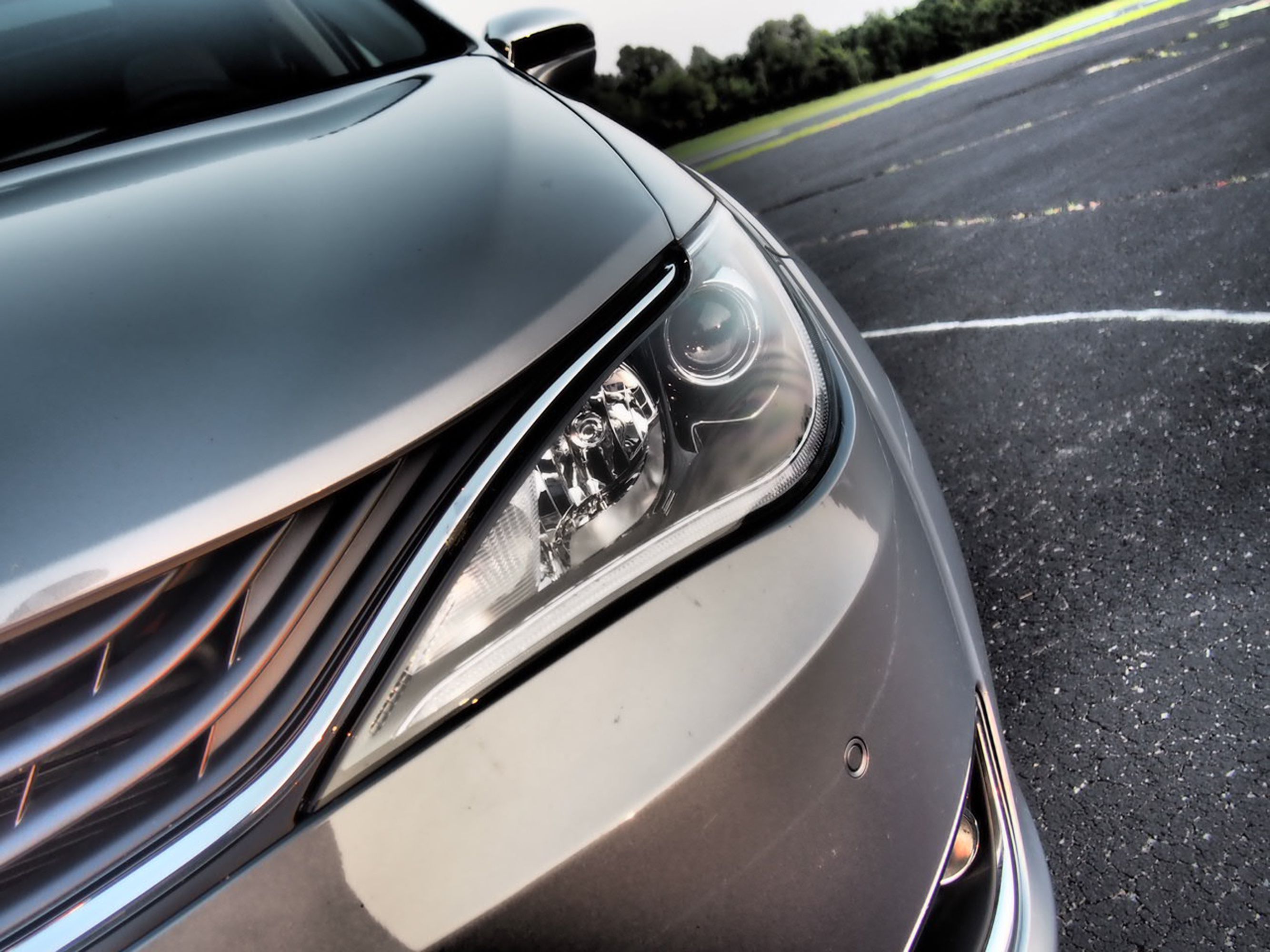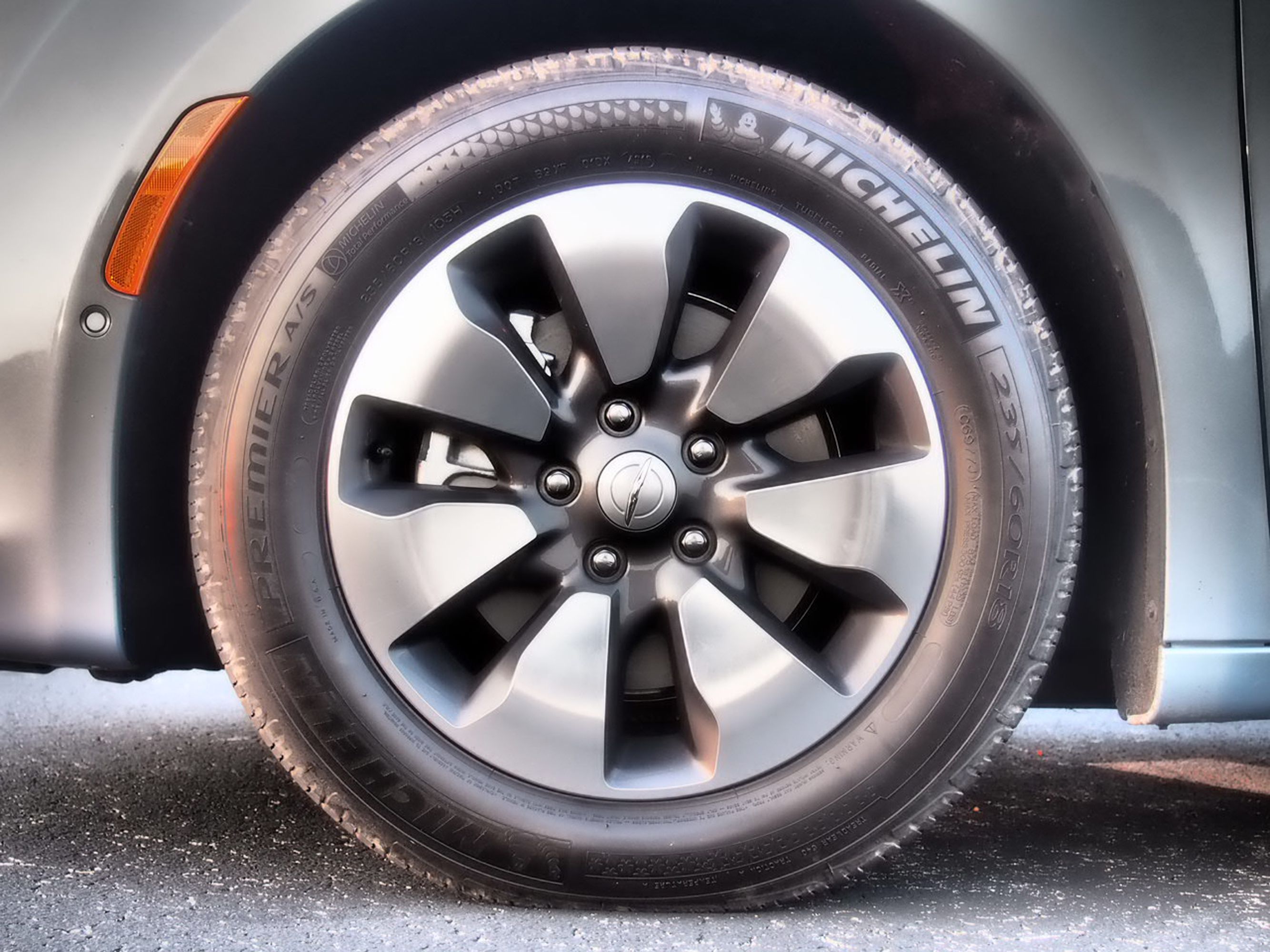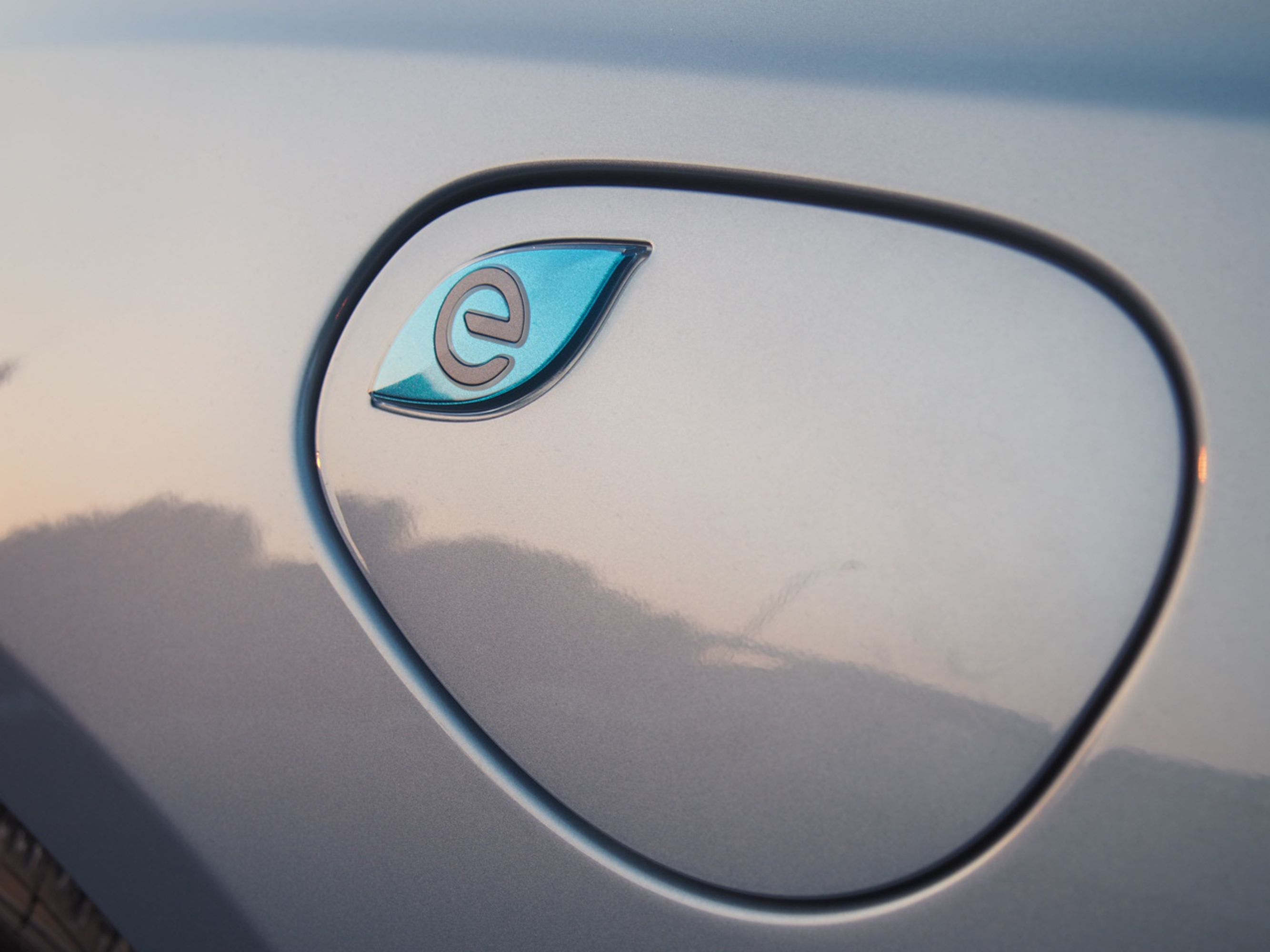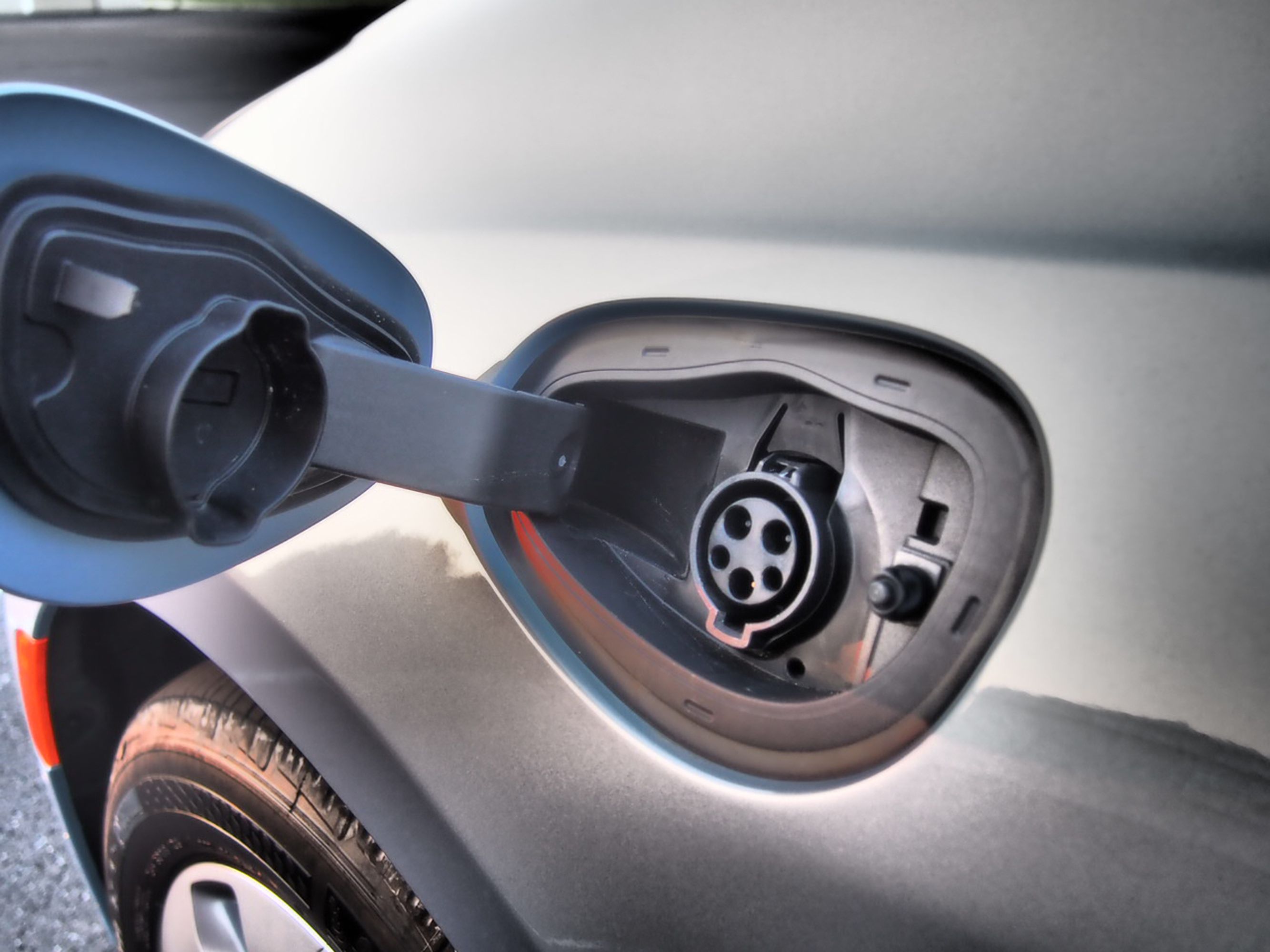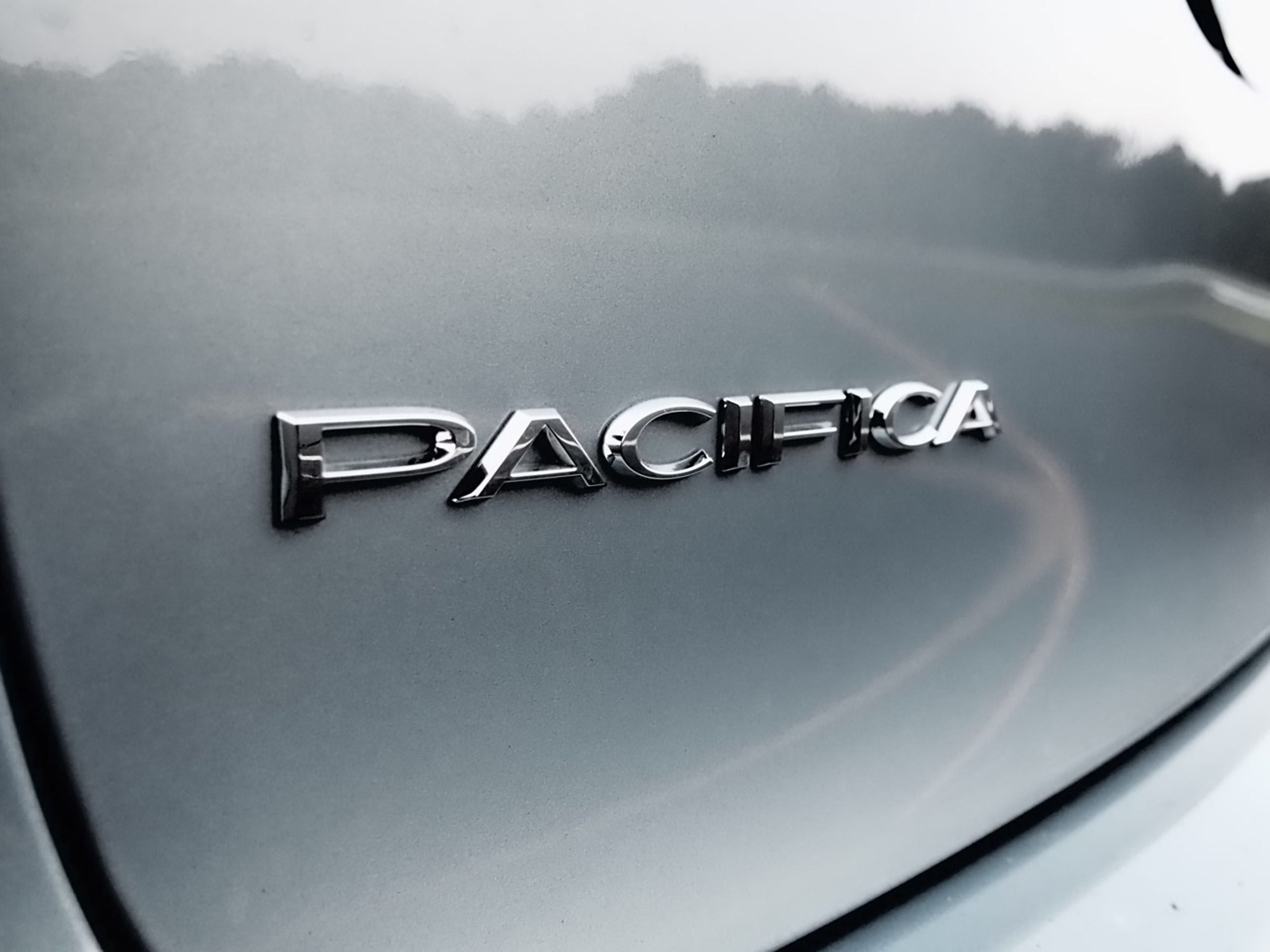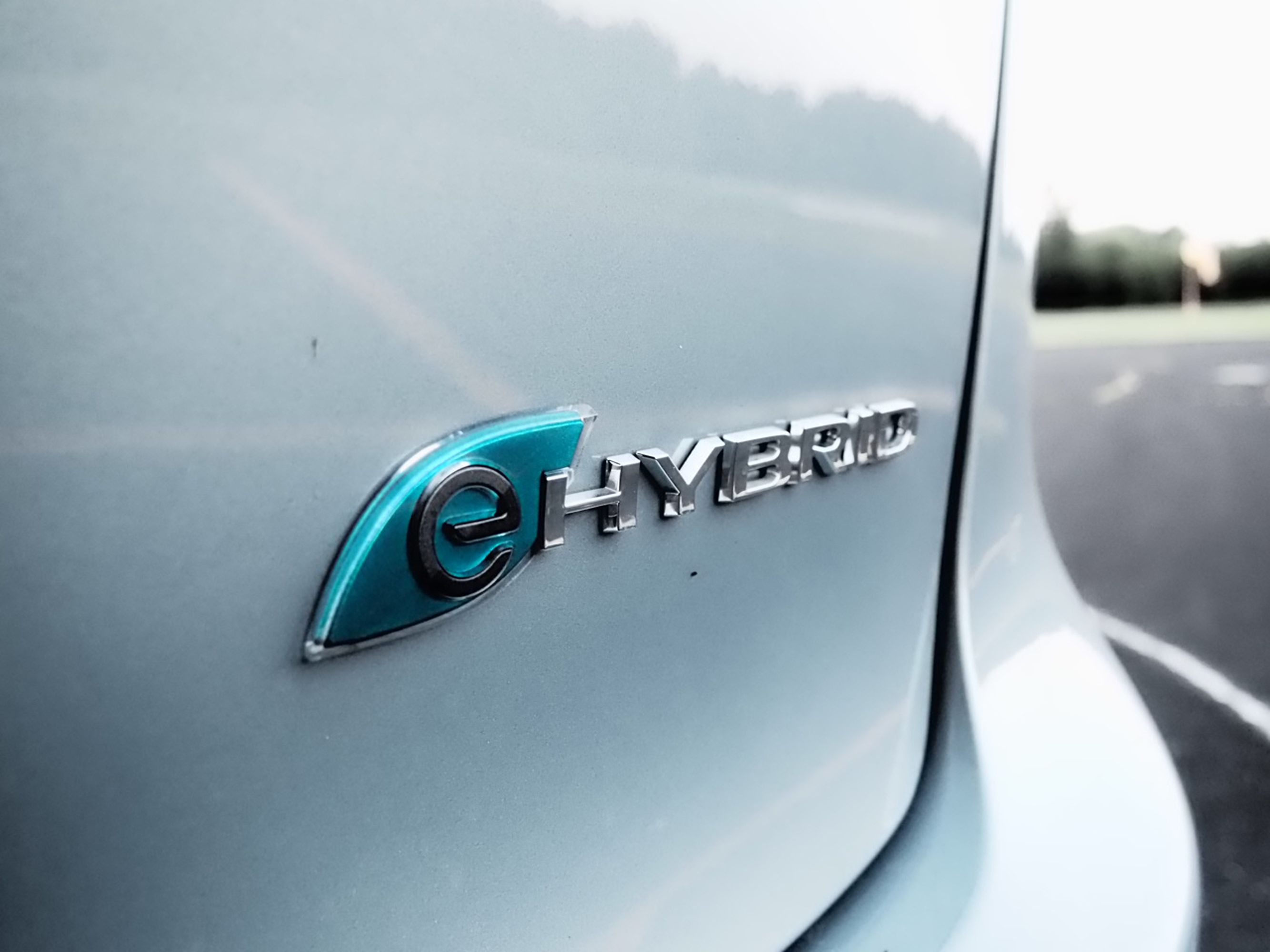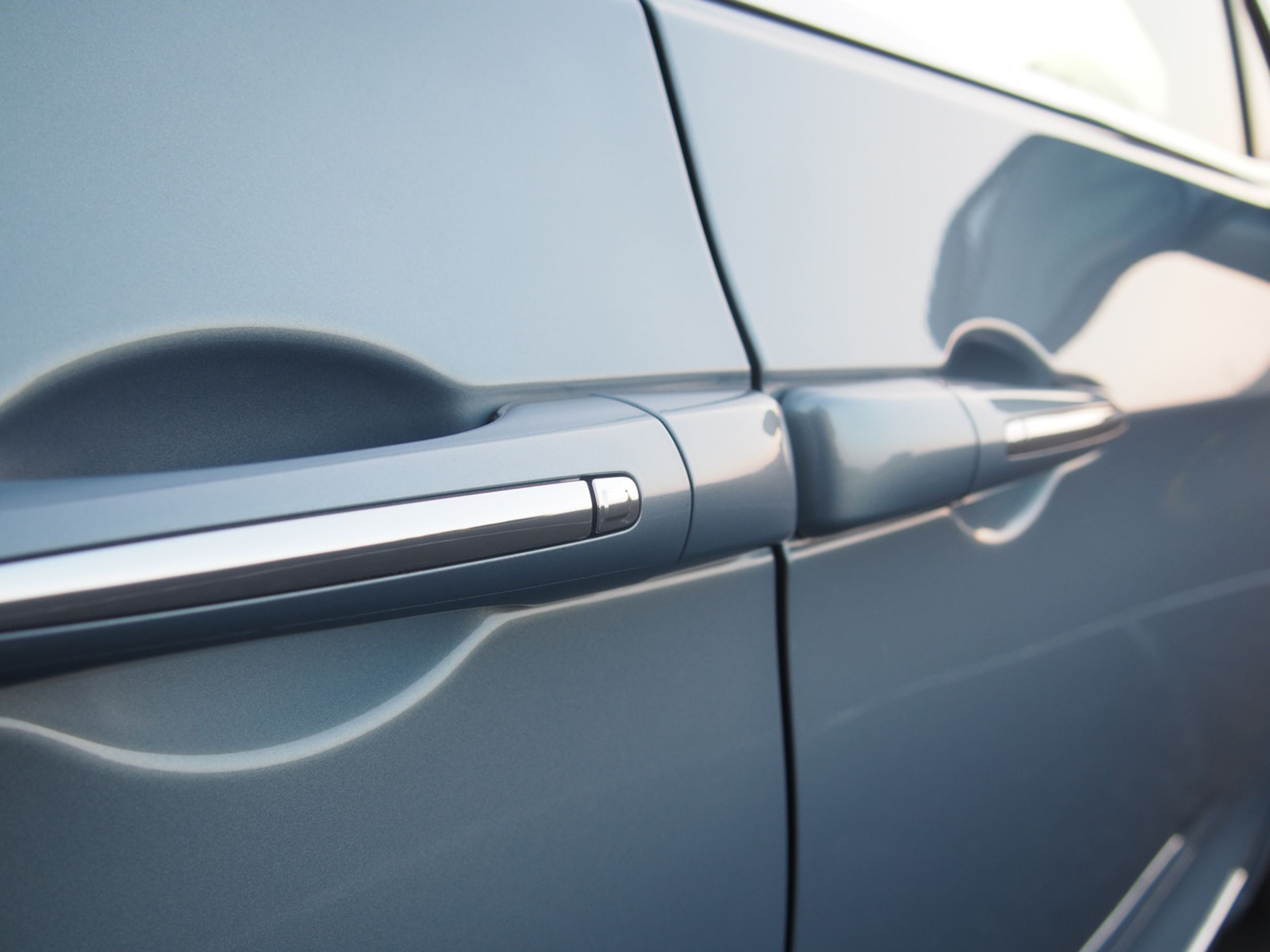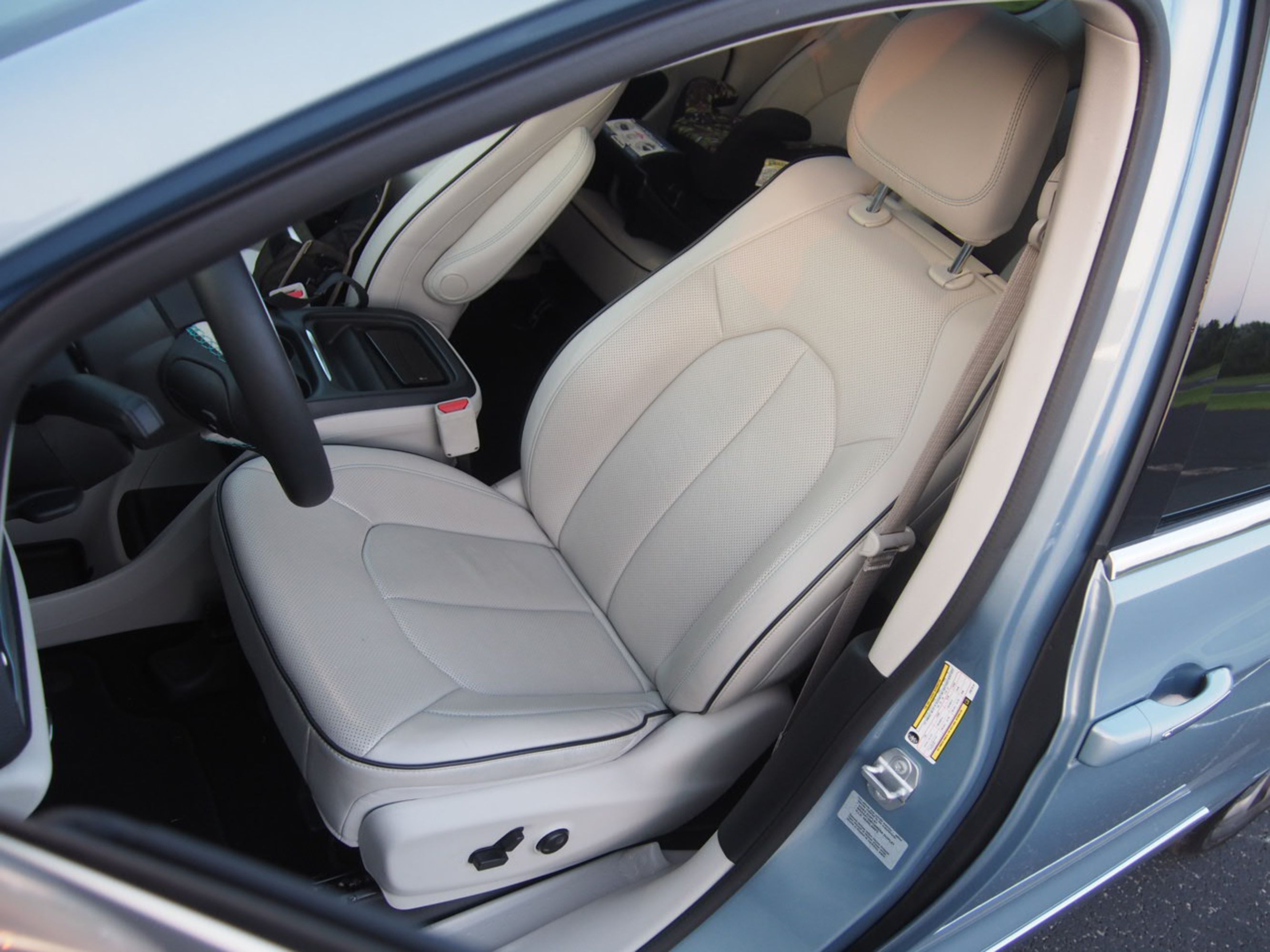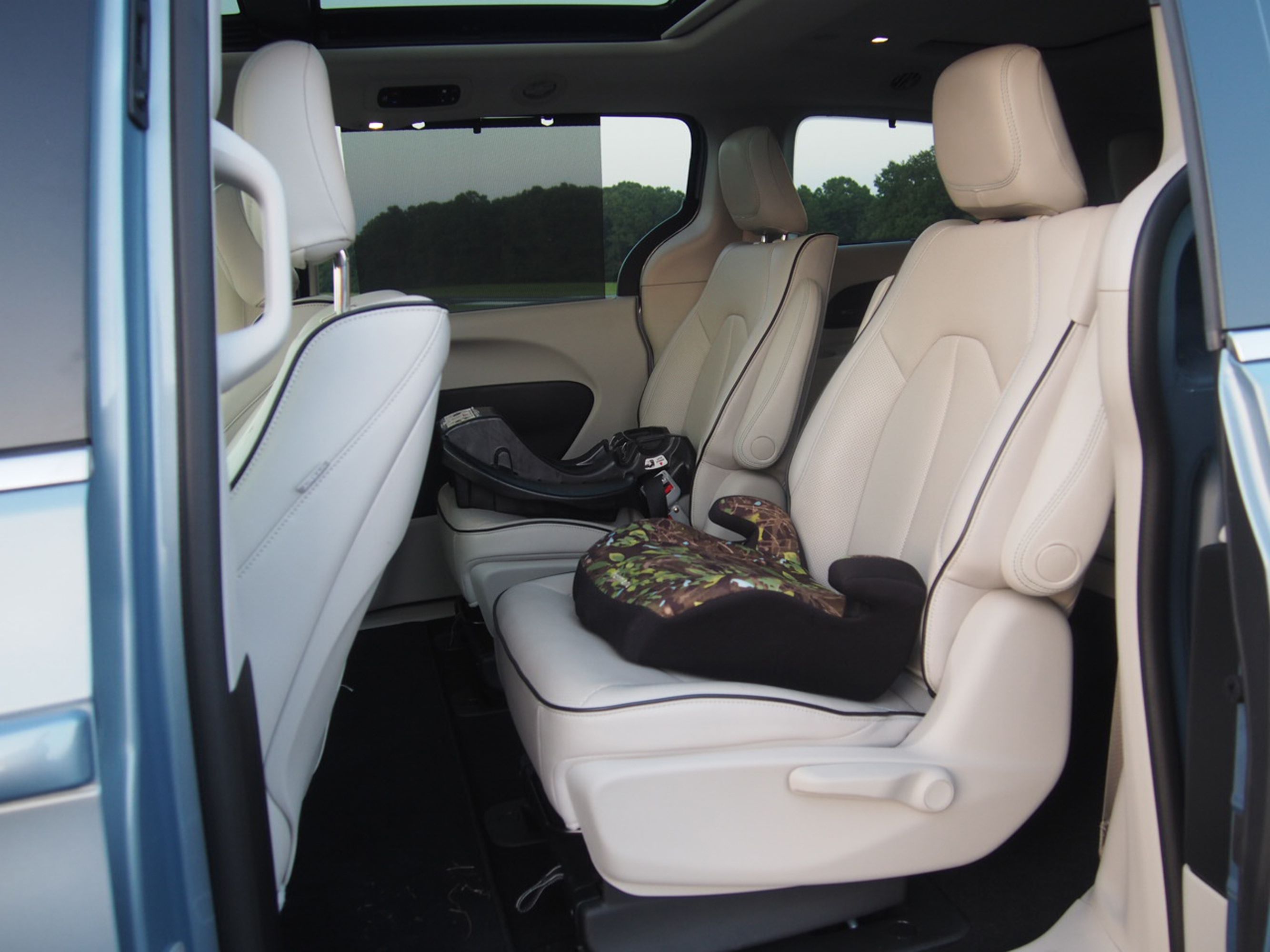Though the badge says “Hybrid,” the important thing to know about the Chrysler Pacifica Hybrid right off the bat is this: It's actually a PHEV. You plug it in, and it runs on electricity for the first several miles of your day.
As I found during a week at the wheel of the electrified minivan, if you have the right commuting or parking situation, you might find yourself using little or no gasoline.
It's noteworthy Chrysler is the first automaker to put a PHEV minivan on sale in America. For a brand with only three models in its showroom nowadays, this was an even bigger home run than the non-hybrid Pacifica that birthed it. The hybrid takes a great, competitive minivan and makes it truly special -- even buzzworthy.
Best of all, it's the kind of plug-in vehicle that just makes sense for a huge number of families. It's not much more expensive than any comparably equipped competitive minivan, yet it gets an EPA-estimated 84 MPGe. It's remarkable because the Pacifica Hybrid squeezes that kind of efficiency out of a big, practically sized, attractive family hauler instead of a small, weirdly styled car wrought with compromises.
After spending a week with the Pacifica Hybrid, I find myself hoping I see a lot more of them on the roads -- and hoping FCA has the good sense to adapt this powertrain to other vehicles we might not normally associate with hybrid efficiency. Chrysler 300? Ram 1500? Jeep Grand Cherokee? All have the potential to be transformed into segment-changing vehicles if they can incorporate the Pacifica’s hybrid system.
2018 Chrysler Pacifica Hybrid - Driven
- Make: Array
- Model: 2018 Chrysler Pacifica Hybrid - Driven
- Engine/Motor: V6
- [do not use] Vehicle Model: Array
Design Notes
From the outside, there's little to differentiate the Pacifica Hybrid from other Pacifica minivans. That's part of the appeal. You're not driving some weird-looking special model. Though it does have a Hybrid badge or three, they’re not trying too hard to draw attention to the electrified powertrain.
That said, it's worth pointing out minivans are a lot less “mini” than they were 20 or 30 years ago, and the Pacifica is no exception. It rides on a 121.6-inch wheelbase and is 203.8 inches long overall. It's 79.6 inches wide without counting the mirrors. It's 69.9 inches tall.
But Chrysler, like other minivan manufacturers, is giving customers what they want: space. There's a whopping 165 cubic feet of passenger space inside. It will haul seven passengers in true comfort, and there's an ample cargo area of 32.3 cubic feet behind the third row -- about twice as much cargo space as your typical family sedan. It's enough to make one wonder why the “crossover” SUV craze is still a thing in America. No SUV has practical, uncompromised space like this. The only compromise made was the second-row seats, which don’t disappear into the floor like non-Hybrid Pacificas. Hey, they had to put the hybrid batteries somewhere.
Chrysler did great work with the exterior of the Pacifica. It has a nose that calls to mind the late Chrysler 200 midsize sedan. The windshield has a lot of sedan-like rake, too. It combines with the low, sloping, sculpted hood, to give driver and front passenger a pretty commanding view of the road. The side view has huge glass area that shrinks a little toward the rear to impart a sense of motion even when the van is parked, plus there's a bevy of unmistakable character lines and creases. The rear hatch features cleanly integrated taillights and a surprisingly upright, yet narrow, glass.
My Pacifica Hybrid was Painted Silver Teal, which is probably the easiest way to spot a Hybrid model because it's a Hybrid-exclusive color. I found the van very attractive. It’s not trying to look like a sporty wagon (wink-wink, Honda Odyssey) but it's also not a boring, utilitarian box on wheels.
Drive Notes
This was the first time I had driven a mass-market PHEV, and honestly, it changed the way I thought about electrified powertrains.
My previous experience with PHEVs and Hybrids had suggested that both were best suited to city life, where they could make the most of their batteries. But I live in rural Tennessee, where I have to drive 20 miles round-trip just to get to a grocery store or to my office. Hybrids don't often achieve their EPA fuel economy numbers when I drive them, perhaps thanks to the hills and highways in my part of the country taxing their gasoline engines.
Meanwhile, the couple of premium-brand PHEVs I have sampled in the past did not have sufficient electric range to even get me to town before the gasoline engine kicked in. That was disappointing since one of those PHEVs was a luxury car that cost more than my house, its price tag pumped to such levels mainly thanks to its tiny array of hybrid batteries and a couple of electric motors.
The Pacifica was so much better-engineered that it made me forget all about those previous disappointments. Why can't every vehicle have a powertrain this well-done?
Its 33-mile electric range is commonsense stuff, given that the average American drives 29 miles a day. The electric motors -- there are two -- make enough power on their own to keep the pace with in-town traffic and even drive 70 mph on the highway for several miles in near-silence. There's not much sound from the motors, and what little sound exists is soon squelched by the unintrusive white noise of wind and tires.
A word on the powertrain arrangement: feeding those electric motors is a 96-cell, 16-kWh battery pack hidden under the second row seats. Chrysler says the two electric motors are set up so that one serves as a primary power unit for the front wheels, and the other is used primarily to regenerate energy when the van is braking or coasting. However, unlike most hybrids, that smaller motor can be summoned to provide a few moments of extra oomph when needed, too.
The gasoline half of the powertrain is a highly modified version of FCA’s corporate 3.6-liter Pentastar V6. It makes an estimated 260 total system horsepower when it combines its full efforts with the electric motors. That's slightly less power than the gasoline-only version of the Pacifica (287 horsepower), but trust me, you don't miss the power. The instantaneous torque available from the electric motors makes up for it when you need to go deep into the throttle.
This was a surprise: The Pacifica Hybrid largely hit its EPA electric range estimate. I was always able to squeeze about 30 to 35 miles out of the batteries, even when I did a long hill-climb to take my boys to school and the babysitter or when I set the cruise control at 70 mph to travel to the grocery store 20 miles from home.
An even bigger surprise: I was able to drive almost my entire test week on electricity. The Pacifica Hybrid cut my gasoline use by about 75% over the course of a week. Considering the low cost of electricity where I live, the savings over the long term would be tangible. That’s especially true when considering the reduced cost of maintenance over the life of the vehicle. Fewer oil changes would be required because the engine would see relatively little use.
When the vehicle depletes its all-electric range, it defaults to hybrid mode, which makes the Pacifica Hybrid behave like a big Toyota Prius. The gasoline engine kicks in, but the car is always searching for ways to boost efficiency. Anytime it coasts for more than a few seconds, the engine will shut down as the hybrid battery pack receives a boost from regeneration. The engine also stops when the van stops at a traffic light, and will stay in EV mode for a few seconds after takeoff if the driver’s foot doesn’t get too heavy.
Chrysler did a good job of making the engine startup smooth. I barely noticed it when the engine kicked in. And when it did, the instantaneous fuel economy display -- perhaps a bit optimistic, I admit -- showed nearly 30 MPG in mostly highway driving. Impressive in a sea of 21-22 MPG minivans.
But beyond the gee-whiz powertrain, how is it to live with the Pacifica Hybrid? In a word, easy. There’s plenty of room for six passengers and their stuff. In my case, I hauled two kids in the back who loved the Pacifica Hybrid’s optional dual-screen rear seat entertainment system. The 10.1-inch screens were tablet-like touchscreens and featured games like checkers and a modern take on the age-old license plate game. They also can play Blu-Ray movies from the disc drive, or you can hook up a couple of players via twin HDMI ports for more direct rear-seat control.
While the second row lost its Stow-’n’-Go capability because of the battery pack under the floor, the third row would easily fold into the floor. And accessing the third row -- which was roomy enough for me to be comfortable, at 6’3” -- was easy because the second-row seats would tilt forward and slide out of the way with an easy pull of a lever. Nicely done, Chrysler.
As far as handling? Well, it’s a minivan, so I wasn’t expecting much. But most of the things I liked about the non-Hybrid Pacifica a few months earlier are still here. The ride is well-controlled for a big, heavy minivan. Rough pavement won’t upset the ride too much. The Hybrid’s electric continuously variable transmission is a great addition -- smoother and more satisfying than the nine-speed automatic in other Pacificas. Steering feel, to my surprise, was not totally numb.
I ended the week saying I wanted one of these. Coming from a guy who usually says he wants his next car to be something small and weird like a Fiat 500, trust me, that’s high praise.
Competitors
It’s hard to compare the Pacifica Hybrid to other minivans, because so far, at least, nobody else is building a hybrid minivan for America. But with a federal $7,500 tax incentive, the Pacifica Hybrid really isn’t much more expensive than its non-hybrid competitors.
Honda Odyssey
The Honda Odyssey is more sporty-looking than the Chrysler Pacifica, if that matters to you. It won’t really be more sporty to drive. These are minivans, after all.
Honda’s design inside the Odyssey is somewhat more sci-fi than the interior of the Pacifica Hybrid. I find the dashboard design of the new-for-2018 Odyssey less friendly to the eye than the one in the Pacifica Hybrid.
As for passenger and cargo space, it’s more or less a wash. There’s more than 30 cubic feet of cargo space behind the third row seats in the Odyssey, and more than 80 cubic feet if you fold those third-row seats into the floor. Chrysler is not the only minivan manufacturer who knows that party trick nowadays. All three rows of seats are perfectly useful for adult passengers.
Not surprisingly, it’s fuel economy where the Pacifica Hybrid will win over the Odyssey. The Odyssey’s 3.5-liter V6 makes 280 horsepower and 262 lb-ft of torque -- slightly more powerful than the 260 combined horsepower of the Pacifica Hybrid’s gas/electric powertrain. But you’re likely to see about 19 MPG city, 28 MPG highway, 22 MPG combined in the Odyssey, according to the EPA. If you’re comparing it to other non-hybrid minivans, that’s perfectly competitive. In fact, that’s what the regular Pacifica gets in EPA testing, too. But the Pacifica Hybrid’s 84 MPGe crushes that.
Odyssey can have a slight edge in price. The Pacifica Hybrid starts at $39,995. Take the $7,500 federal tax incentive and any state tax incentives into account before running the numbers, though. Where I live in Tennessee, we don’t have any state tax breaks for buying plug-in hybrid vehicles, but the federal incentive still lowers the net cost to $32,495. That’s a little more than the sub-$30,000 base Odyssey (starting price $29,990). But considering the fuel you might save, the difference isn’t large.
Read our full review on the 2018 Honda Odyssey.
Toyota Sienna
Toyota’s Sienna has aged a lot since the “Swagger Wagon” days. Other than the government fleet queen Dodge Grand Caravan, it’s the oldest minivan design on sale today.
But for some people, that much-respected Toyota reliability is a big selling point -- especially when you’re comparing it against Chrysler, who hasn’t had the best reliability record where minivans are concerned.
The Sienna recently got a design refresh that mostly affected its face, with a slightly more aggressive front grille trim serving to give the van another year or two of relevancy before a total redesign, which I hope is coming soon for this aging platform. Inside got a few nice updates, too, including Toyota’s Entune 3.0 infotainment system that is a little easier to use and more up-to-date with the latest technologies. However, Toyota’s Entune still lacks Android Auto/Apple CarPlay capability that Chrysler is starting to sneak into its Uconnect infotainment systems of late.
Like the Odyssey, the Sienna loses on fuel consumption to the Pacifica Hybrid. That’s not a completely fair comparison, but being that it’s the Pacifica Hybrid’s primary selling point, it bears repeating.
However, the Sienna has something no other minivan has in America at the time of this writing: all-wheel drive. If you want it, you can buy a Sienna that drives all four wheels when required. You’ll pay more at purchase time, and there’s a slight penalty in fuel economy, but if you live where snow is a regular feature of winter, it may very well be worth the additional cost.
Other advantages of the Sienna include easier-to-use child anchors and tethers, which you’ll appreciate if you have to move a baby seat in and out of the van frequently, and more cargo room than Pacifica behind the third row (39.1 cubic feet vs. the Pacifica’s 32.3 cubic feet.)
Overall, I find the Chrysler Pacifica -- Hybrid or not -- more comfortable. And it has better safety equipment by virtue of its more recent design. But the Sienna has definite appeal where practicality and value are concerned.
Read our full review on the 2018 Toyota Sienna.
Kia Sedona
The Kia Sedona came back after a brief hiatus a couple of years ago, so it is more up-to-date than the Toyota Sienna. And, true to form, Kia offers one of the strongest value propositions in the segment if your primary concern is price: The base Sedona starts about $2,000 cheaper than a base Pacifica.
Sedona does well with safety ratings, just like the Pacifica. And it offers competitive space for passengers and cargo. There’s slightly more of both in the Kia, in fact.
But where the Sedona disappoints is in its handling and powertrain. The Kia’s 3.3-liter V6 feels rougher and less-refined than Chrysler’s -- doubly so when compared to the Pacifica Hybrid. Its handling is ponderous and feels awkward when hustled or when trying to navigate tight parking lots. The Pacifica feels much nicer to drive, Hybrid or not.
The Sedona gets the worst fuel economy in the minivan segment, too, with EPA ratings of 18 MPG city, 24 MPG highway.
But the pricing is what wins people over to Sedona. Kia dealers tend to be very discount-happy, and some comparison outlets show the base Sedona L regularly selling below $20,000. The difference in price buys a lot of gasoline.
I’m watching with interest to see whether Kia starts adopting its hybrid drive system to more of its models based on the early success of the Niro Hybrid. A plug-in Niro Hybrid is just coming to market at the time of this writing, and could easily lend some of its powertrain design to the Sedona to make a Chrysler competitor.
But that’s something Toyota could easily do, too, based on the preponderance of Prius hybrids and PHEVs it has sold in recent years. And despite persistent rumors that a Sienna Hybrid is “just around the corner,” it has yet to materialize. Will Kia beat Toyota to the punch to become the second hybrid minivan for sale in America? Only time will tell.
One thing is for sure, though: Kia learns quickly. Who would have thought the Soul would be the last of the subcompact boxcars to survive -- and that it would survive because it’s nicer to drive, with better features and performance than the other players in that segment? Who would have said, five or 10 years ago, that the brand would build the Niro, one of the most buzzworthy hybrids and PHEVS in the industry?
Read our full review on the 2017 Kia Sedona.
Conclusion
Chrysler did a great thing when it put a plug-in hybrid powertrain in the Pacifica. I already liked the Pacifica based on my test drive of the non-Hybrid version. But the Pacifica Hybrid made me fall in love.
This is the kind of practical PHEV America needs. It is my sincere hope that the auto industry takes the lessons learned in the Pacifica Hybrid and applies them to more vehicles in more segments. I didn’t realize how little gasoline I would need, even with a relatively modest 33-mile electric range.
What if a next-gen Pacifica Hybrid has a 50-mile electric range thanks to improved battery chemistry? Or what if Chrysler puts a big lump of batteries in the hole where the engine goes and gives us a 300-mile range on a Pacifica EV someday? The future is looking exciting.
If you’re shopping for a family hauler, I cannot recommend this enough: Test drive a Pacifica Hybrid. For about the price of a midsize or large crossover SUV, you can have a much more practical vehicle that will slash your gasoline expenses.
My tester had an MSRP of $47,885. The federal tax incentive would bring my net cost down to just a shade over $40,000. That’s a pretty strong deal in a world where it’s easy to find yourself shopping GMC Acadias or Nissan Pathfinders that often sell for around $40K with a few options.
It’s simple, really: The Chrysler Pacifica Hybrid just makes sense.
Disclosure: Chrysler provided the vehicle, insurance, and a tank of fuel -- of which I used only a couple of gallons -- for this review.
References
Chrysler Pacifica
Read our full review on the 2017 Chrysler Pacifica Hybrid.

